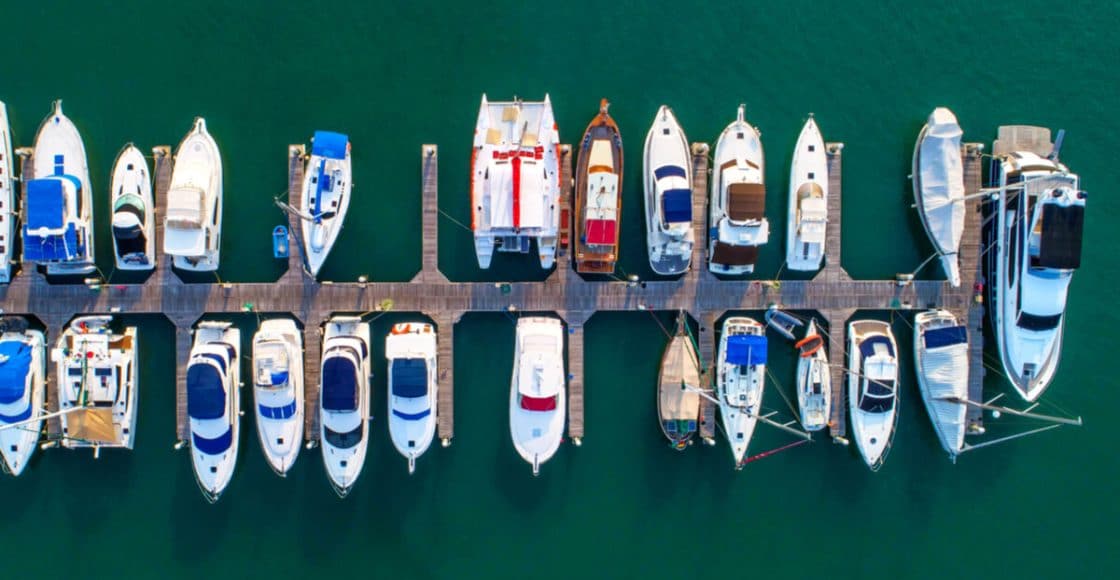

Yachts vs. Boats: What are the Differences?

Table of Contents
Many people use the words “boat” and “yacht” interchangeably, and some lean on the latter to make their ride sound more impressive. But what are the key differences between boats and yachts?
First, let’s look at some broad definitions of a boat, a yacht, and other related vessels.
- “Boat” can refer to just about any kind of vessel— towboat , fishing boat , center console , houseboat , and so on.
- “Dinghy” designates a small boat with a human or wind means of propulsion including a rowing dinghy or sailing dinghy. It also refers to a tender to a bigger boat or yacht.
- “Ship” is a large commercial boat, often used for distance travel and transport of goods or passengers – cruise ship, container ship, etc.
- “Yacht” is typically a larger boat with luxury amenities used as a recreational vessel— motor yacht , sailing yacht .
- “Superyacht” is a large yacht and is often also called a mega yacht . The delineation used to be at 80-feet but again, with today’s size creep, anything under 100 feet would just simply be called a yacht.
So, yacht or boat? Let’s dive deeper into the elements that differentiate a boat from a yacht.
Own a Boat or a Yacht? Learn How to Offset the Cost of Ownership by Listing on Boatsetter
Size of the Vessel
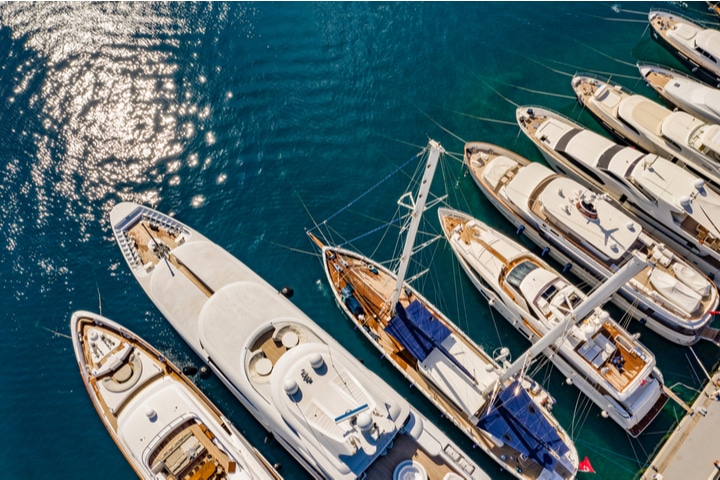
Some place a hard line at 35 feet. Below that, you have a boat and above, it’s a yacht. However, that’s an artificial differentiator.
Just 30 years ago, a 30-foot boat was considered large and could have been a yacht but as recreational boats grow longer, the term yacht has been pushed up the scale.
That said, a well-kept 40-foot boat designed for recreation can technically still be called a yacht (although larger vessels are likely to cost more, price isn’t a good indicator of yacht status primarily because it fluctuates with brand, age, and amenities).
Check out local yacht rentals near you to understand how size plays a difference.
What it’s Used For
A yacht is a vessel designed for recreational purposes. It generally operates on open waters (rather than small lakes or rivers) and has accommodations for overnight guests.
A cruise ship, on the other hand, accommodates a large number of passengers in a commercial setting whereas a yacht carries a smaller number (of paying or non-paying) passengers for private recreation.
Onboard Technology
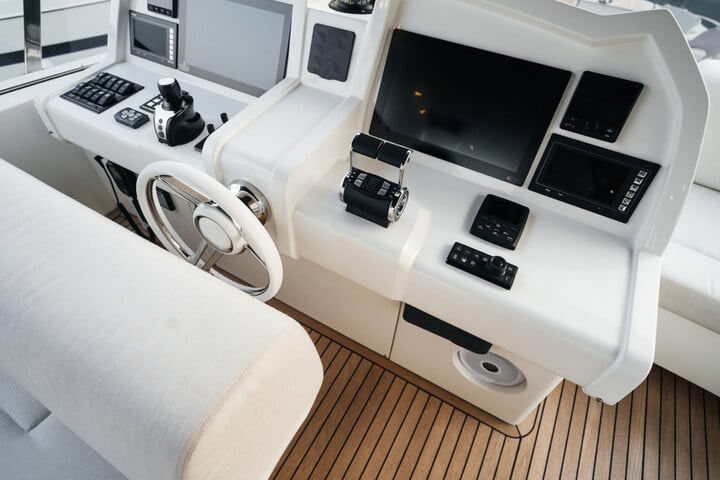
Advanced technology for navigation, communications, and system operation as well as redundant systems for safety can be found on a yacht that is likely to venture farther.
Again, there are caveats because today’s towboats that are fun day boats also feature technology such as GPS and digital switching that integrates many electrical and electronic features.
Propulsion Types
This is a tricky one. “Yacht” comes from the Dutch word “jaght” which referred to a sailing vessel that was used by the navy to capture pirate ships and later for recreation by the affluent.
Today, a yacht can be a large sailing vessel or a motor yacht. All larger yachts will have a motor for propulsion whether they have sails or not. Sailboats by design have smaller motors so trying to put a horsepower minimum on yacht propulsion is simply inaccurate.
Some define a yacht as having multiple crews to operate the vessel and tend to passengers or guests. The larger the yacht, the more crew will be required to navigate, maintain and service the vessel. That said, a couple who owns a 50-footer can call their boat a yacht although it’s owner-operated.
Luxury and Amenities
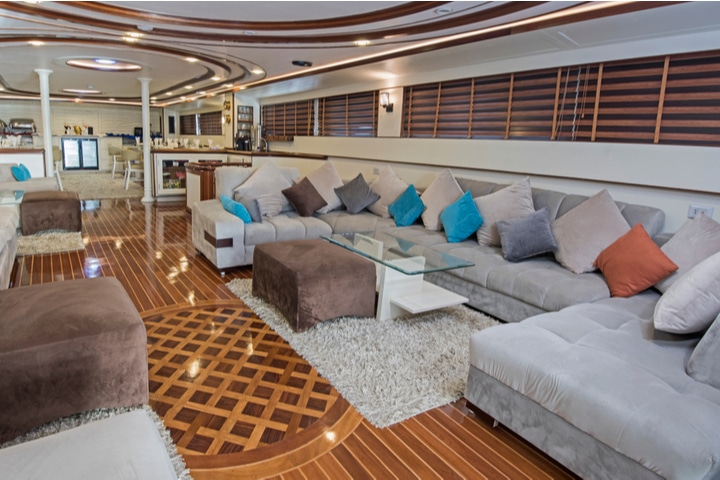
This is perhaps the best measure of a yacht. If the vessel offers accommodations, a galley , a head , and is luxurious in its presentation, it’s most likely a yacht.
That said, there are lots of center console fishing boats and towboats that are pretty nicely equipped these days and they wouldn’t be called a yacht.
All yachts are boats, but not all boats are yachts—and the lines are blurry. The word yacht elicits images of posh seafaring experiences while a boat evokes ideas of fun and perhaps work. Do some research to learn what size and type of boat or yacht is best for you .
To a degree, the point at which a boat becomes a yacht is in the ear of the beholder but if you focus on size, amenities, and the type of use, you’ll be able to discern the difference. Then all that remains is to find a way to spend time and have fun on any kind of vessel.
Browse All Available Boat & Yacht Rentals Across the Globe

Zuzana Prochazka is an award-winning freelance journalist and photographer with regular contributions to more than a dozen sailing and powerboating magazines and online publications including Southern Boating, SEA, Latitudes & Attitudes and SAIL. She is SAIL magazines Charter Editor and the Executive Director of Boating Writers International. Zuzana serves as judge for SAIL’s Best Boats awards and for Europe’s Best of Boats in Berlin.
A USCG 100 Ton Master, Zuzana founded and manages a flotilla charter organization called Zescapes that takes guests adventure sailing at destinations worldwide.
Zuzana has lived in Europe, Africa and the United States and has traveled extensively in South America, the islands of the South Pacific and Mexico.
Browse by experience

Explore articles

Sailgating 101: 7 Ways to Throw a Great Tailgate Party on a Boat

Snorkeling in Fort Myers

Best Freshwater Fishing Boat Types

How to Write the Best Headline for Your Boatsetter Rental Listing
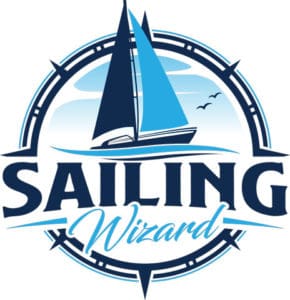
What’s the Difference Between a Boat, Yacht & Ship?
Whether you are a brand new sailor or just wanting to brush up on some terms, it is essential to know what to call a particular watercraft if you’re going to fit in while you’re at the docks or out on the water. There are many nuances and subtle differences between water vessel types, but below are some of the main differences.
In general, yachts are either sailing or motor vessels used for pleasure. Yachts are often luxurious and equipped with an overnight cabin. Boats can be either propelled sail or a motor and come in varying sizes. On the other hand, ships are usually motor-powered and much larger than boats.
Some of the differences between watercraft types can be a little fuzzy, but once you grasp the main differences between them, it becomes relatively easy to tell them apart. If you have no previous knowledge of watercraft, you are likely very confused about what defines a yacht, boat, and ship, so I’ll try to clarify any confusion you might have in the next few sections.
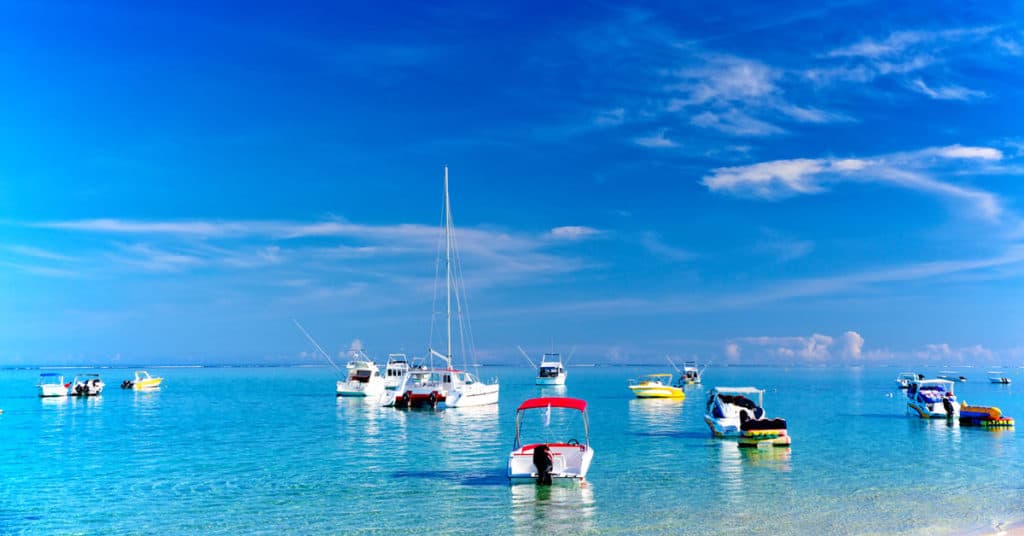
Similarities and Differences Between Boats, Yachts, and Ships
The many bodies of water all over the world are home to an extensive collection of different watercraft. There are so many shapes and sizes that they come in that it is nearly impossible to fit every single one into a specific classification.
However, in the following table, I did my best to loosely define ships, yachts, and boats so that it is easy to see the differences between the types of watercraft.
As I mentioned earlier, it is impossible to fit EVERY SINGLE water vessel into a particular category, so there are tons of exceptions out there. In addition to the exceptions, different organizations, laws, and people classify types of boats slightly differently.
There is no universally accepted definition for ships, boats, and yachts, but instead many different sets of rules and regulations. In this article, I have tried my best to use the most commonly accepted definitions for each watercraft type.
Now that we’ve gone over some of the main differences and similarities between boats, ships, and yachts, let’s take a look at each type of vessel individually and look at their most prominent characteristics and attributes.
What Exactly is a Boat?
Boats come in a vast array of sizes and shapes. To many people, the term “boat” simply refers to nearly any watercraft, but there are actually a few restrictions and defining characteristics that all boats have. So let’s just get right into it and take a quick look at what exactly qualifies a vessel as a boat.
Overall Size of Boats
As I said before, there is a massive catalog of different types of boats, and they come in a variety of sizes. There are huge boats that hold lots of cargo or people, and then there are smaller ones that barely can stay afloat with a single person on board.
Typically, boats are defined as watercraft that are less than 197 feet long. However, most boats you are likely to encounter on the water are usually around 30 feet long.
General Price Range of Boats
Again, it is hard to accurately give a price range for all boats because they come in so many different sizes, styles, and types, but most modern boats seem to fall in the $1,500 to $100,000 range.
Small Jon boats can cost even less than $1,500, while large sailboats and houseboats can cost well above $100,000.
Most Common Uses of Boats
Boats are used all over the world for a variety of different reasons and to do many tasks. Many types of boats serve a wide range of uses, but most are primarily used as a residence, for pleasure, or commercially.
Some of the most popular types of boats, such as sailboats, bowriders, and dinghies, are commonly used for enjoyment, fishing, racing, or other pleasurable activities. There are also many types of houseboats used as residences and commercial boats used for chartering or moving goods or people.
Propulsion Method of Boats
Due to the wide variety of boats, you are likely to find boats propelled by almost every propulsion method imaginable. Some of the more popular propulsion methods for boats to use are man-power, wind power, and motor power.
Boats on the smaller end often use the power of the people on board to row or paddle, while larger boats rely on sails or powerful motors attached to the stern. Many boats use more than one propulsion method, either together or with one of them as a backup.
What Exactly is a Yacht?
Yachts have many of the same attributes as boats, but their quality, size, and luxury really set them apart. When someone says “yacht,” many people imagine watercraft that are SUPER LARGE, and while there are lots of massive yachts, many smaller boats also qualify as yachts, which might surprise you.
Overall Size of Yachts
There are many different sized yachts, and the rules regarding how big they have to be are not very strict. In general, luxury watercraft greater than 33 feet in length are considered yachts. However, boats smaller than 33 feet are sometimes called yachts if they are exceptionally luxurious and elegant.
There is no upper limit to how large a yacht can be. Yachts longer than 100 feet are often referred to as mega yachts, and ones over 150 feet long called are super yachts.
General Price Range of Yachts
Because the very definition of a yacht requires it to be very luxurious, they often come with quite a price tag as a result. There is quite a range of different price points for yachts, ranging from $250,000 to $50,000,000 and beyond.
Most Common Uses of Yachts
Yachts, because they are so expensive to maintain and purchase, are primarily used for pleasure purposes. Day trips out on the water are typical for yachts, although they often have overnight cabins, so longer excursions are popular.
Chartered yachts are also very popular, which bridges the gap between commercial and pleasure. Although, when you are on a chartered yacht, it is usually for the sole purpose of having a great time and enjoying yourself.
Propulsion Method of Yachts
Because yachts are considered very luxurious and often so large, they are usually solely propelling using motor power. Even if a yacht is on the smaller end of the spectrum, they often only use a motor as a means of driving the craft through the water.
However, many large sailing yachts out there use sails and the wind to propel the vessel. So while the large majority of yachts use motors, keep in mind that some large and luxurious sailboats can be considered yachts.
What Exactly is a Ship?
Throughout history, large ships have been a helpful tool for many civilizations and have allowed them to transport goods and explore places beyond their homes. In modern times, ships are quite common and are used for a variety of different reasons.
Overall Size of Ships
One of the primary characteristics of ships that set them apart from boats is their size. Ships, especially in modern times, are often MASSIVE and are restricted to navigating only extensive waterways.
Vessels greater than or equal to 197 feet long are often considered ships. However, most ships today are huge and often fall in the 1,000-foot range or larger.
General Price Range of Ships
Most individuals will never own a ship due to their extreme maintenance and the cost of purchasing one. While many smaller ships are far less expensive, most modern ships cost anywhere between $50 and $500 million.
Large and luxurious cruise ships can even cost upwards of $1 billion to construct, and that’s not even taking into account staff, maintenance, and other costs.
Most Common Uses of Ships
Ships perform many different duties throughout the world, but usually, they are used to transport passengers or goods over long distances. In addition, they are also often used by military, scientists, fishers, and a plethora of other professions and people. They are also often used for pleasure purposes, in the form of passenger cruise ships.
Overall, ships encompass a large selection of vessels that perform many different duties.
Propulsion Method of Ships
Due to their large size, most modern ships are propelled using motors. However, even though ships are equipped with massive motors, they are still pretty slow and often move at around 20 knots per hour, although some move much quicker.
While most, if not all, ships today use motors to propel themselves through the water, this was not always the case. Before motors were around, many civilizations used ships for military, exploration, transportation, shipping, and many other uses. During these times, ships were powered primarily by man and wind power. Even today, you can occasionally find a sail-powered ship, though they are quite rare.
James Gerard
Hi, I'm James! I started sailing at a very early age here in the UK, and have enjoyed so many opportunities to sail all over the world. I created this website to share the many sailing tips I've leaned over the years, so that you can also discover the joy of sailing with safety and confidence.
Recent Posts
How to Predict Wind Direction & Speed from a Surface Pressure Chart
Learning how to read a surface pressure chart will allow you to predict the wind speed and direction based on the weather chart. This will help you in planning your next sailing trip.
What Does a Black & Yellow Buoy Mean? (Cardinal Marks Explained)
If you see a black and yellow buoy while you're sailing, don't ignore it. Cardinal Marks are there to help you avoid hidden hazards in the water. This helpful article will help you to identify a...
- Pontoon Boats
- Personal Watercraft
- nauticalknowhow
- Nautical Knots
- Tools and Calculators
Yacht vs Boat: What’s the Difference?
You may be surprised to learn that the difference between a yacht and a typical boat is not as easy to figure out as you’d think. This is thanks to the fact that there’s no specific definition for what a yacht actually is. In general, and as most people commonly use and understand these words, a yacht is a fast, often luxurious vessel used for recreational purposes. A boat, on the other hand, is typically a smaller vessel and it can have many purposes from recreation to fishing to rescue and more.
Let’s get into some of the specific differences between yachts and boats to get a better idea of what each of these admittedly general terms is trying to refer to.
What is a Yacht?
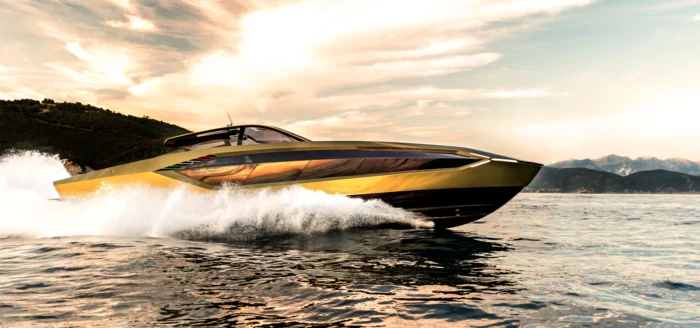
Yacht comes from a Dutch word jaghte , itself from the word jaghtschip which means “fast pirate ship.” That gives you an idea of where people’s heads were at when yachts first came on the scene. These days, the pirate part isn’t really involved but you do tend to expect a yacht to have some speed. Not that these are necessarily speed boats all the time, but there are racing yachts out there that people use exclusively for that purpose.
Because there is no specific definition for the word yacht in modern usage, you have to play it by ear a little bit. It’s one of those words that we all know what it means, even if we don’t have a proper, set in stone definition.
In general, and for most people, a yacht is a large recreational boat, capable of reaching high speeds and noted for its luxury and features. So what does any of that mean?
In terms of size, most people but not all would consider a yacht to be a boat that has reached at least 78 feet. Some people would acknowledge smaller vessels, as low as even 33 feet, as yachts, but this can be hotly debated even among yacht makers and yacht charter companies.
What is a Boat?

One of the oldest words in any language, boat can be traced back through Middle English to Olde English to proto-Germanic to the proto-IndoEuropean word “bheid” where it may have originally meant “to split” or something along those lines. That would have referred to simply splitting or hollowing wood to make a boat. So, by that definition, a boat is incredibly loosely defined.
In modern understanding a yacht is a boat but not all boats are yachts. Consider boat more of an overarching term like automobile while yacht is like an SUV. There are lots of other automobiles and SUV is just one kind.
Usually when people talk about boats today they mean smaller vessels. At some point, large boats become ships, and potentially even a yacht. Smaller boats could be anything from a fishing boat to a jon boat to a sailboat , a bass boat , catamaran , pontoon boat and more. Those boats often have very different forms and functions which allow for a heck of a lot of variety and usage.
Yacht Size vs Boat Size
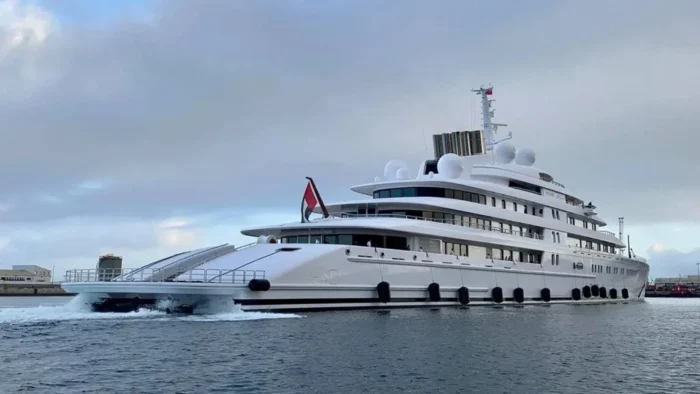
As we mentioned above, people have different opinions about how big a yacht has to be. The bare minimum seems to be at least 33 feet. That said,I have even seen smaller boats called yachts but let’s say, at a minimum, any vessel under 30 feet will always be a boat of some kind and would rarely if ever be properly called a yacht.
Larger boats exist and are not yachts, of course, but these can be sport fishing boats, catamarans, even large pontoons, houseboats and more.
Yachts can start at that low range and get up to incredible sizes which we will touch on in a moment. The largest yachts can get close to 600 feet.
Mega Yachts vs Larger Boats

Once a yacht hits 120 feet people often call it a super yacht. There doesn’t seem to be an easy to find historical reason why 120 feet is the cut off that makes a super yacht. As yachts grew even larger, 200 feet became a sort of milestone for where a superyacht became a mega yacht. And nowadays, with even bigger yachts available, 400 feet is where the cut off often begins for yachts known as gigayachts.
Now, when it comes to large boats, here’s where things get fuzzy. You can find sport fishing boats that are over 120 feet, or sailboats that reach the same length and much bigger. But these are often also called yachts. Sailing yachts, sport fishing yachts. So there’s a line there that boats can straddle even if, under a certain length, the same boats wouldn’t be considered yachts.
Part of the transition from boat to yacht at large sizes comes from the fact that a massive boat is obviously expensive which means more luxury features are likely to be included which means it’s more likely to be considered a yacht.
But large commercial vessels, military and law enforcement vessels, and some search and rescue vessels used by government agencies or private companies can also reach lengths of 60 feet to 100 feet and more and these would obviously never be called yachts. It’s that key feature of being used for recreation that you need to factor in.
Yacht Engines vs Boat Engines
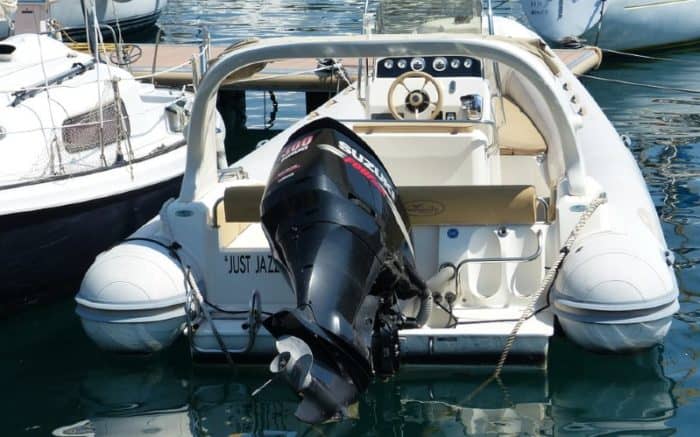
Obviously a sailing yacht won’t factor in here but motor yachts and hybrid yachts have very powerful engines because yachts tend to have a much higher gross tonnage than your average boat of even the same length. Keep in mind that some yachts, especially mega yachts, may have up to seven decks. You need a lot of power to keep that moving. Some of the biggest yachts in the world have a fuel tank capable of holding up to a million liters. That’s going to leave your normal outboard motors in the dust.
Boat Crew vs Yacht Crew

Yacht crews are often found wearing uniforms and have specialized training not just to run the vessel but also to see to the needs of the guests. Since yachts are often characters, the guests on board are like guests at a hotel and treated as such. Large yachts are a lot like a private cruise service.
Boats don’t always even need a crew and if a boat does have a crew it probably means the boat is a commercial vessel of some kind – think of a commercial fishing boat, for instance.
Boat Amenities vs Yacht Amenities

Here’s a place where boats and yachts often part ways significantly. There are some pretty luxurious houseboats and pontoons and cabin cruisers out there to be sure, but when you look at what you can get on a megayacht there’s barely a comparison.
The most expensive yachts have multiple helipads, swimming pools, tender garages that contain things like jet skis, gyms, high tech yacht electronics, massage rooms, bars, movie theaters, mini subs, discos, you name it. These really are like private cruise ships.
Now obviously it’s not fair to compare a 12 foot jon boat to the 600 foot Azzam yacht but these are clearly as different from each other as any two things can be. Yachts are known for their luxury and they can truly push the limits sometimes.
Yacht Locations vs Boat Locations

Smaller boats are obviously more capable of handling coastal and inland waters than any yacht you’re likely to find because that’s what they’re meant for. Yachts are typically, but not always, found in saltwater, usually around vacation destination areas like the Bahamas, the Mediterranean, Florida, tropical islands and so on. Boats are at home anywhere you find water.
There are definitely yachts on inland lakes like the Great Lakes, but they are decidedly less common.
Yacht Price vs Boat Price
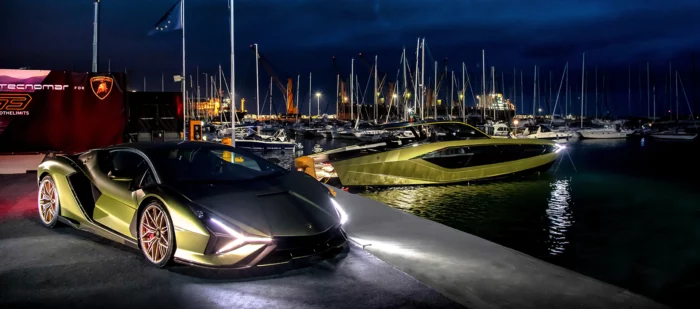
Here’s where things get really different. You can get a little fishing boat for a few hundred dollars if you want. The Eclipse yacht cost $1.5 billion. So that’s the range we’re dealing with in terms of yachts vs boats when it comes to cost. If you try to meet in the middle with a 33 foot sport cruiser boat you might pay $200,000. But the average price for a yacht in 2021, and this means a vessel between 56 feet and 79 feet, was $1.1 million.
The Bottom Line
All yachts are boats but not all boats are yachts. In general, a yacht is a larger vessel that is used strictly for recreational purposes. It’s defined by its speed and its luxury and is often at the higher end of the price range. You tend to find yachts in popular vacation spots and they come in at an average price over $1 million.
Boats are generally smaller vessels and can be used for everything from fishing to cruising to commercial, police boats and military purposes. They can be extremely simple and, as a result, also incredibly cheap compared to yachts as well.
My grandfather first took me fishing when I was too young to actually hold up a rod on my own. As an avid camper, hiker, and nature enthusiast I'm always looking for a new adventure.
Categories : Boats , Yachts
Leave a Reply Cancel reply
Your email address will not be published. Required fields are marked *
Save my name, email, and website in this browser for the next time I comment.
More in Boats

What Is A Gunwale?

131 of the Best Hawaiian Boat Names

167 Patriotic Boat Names

The 138 Best Boat Names for Dog Lovers

The People’s Poncho Review and Ratings

Oru Lake Kayak Review

About Boatsafe
Established in 1998, BoatSafe is your independent guide into the world of boating, fishing, and watersports. We provide expert insights and detailed guides to help you find products tailored to your needs and budget.
Contact Boatsafe
- Address: 4021 West Walnut Street. Rogers, AR 72756
- Phone: (479)339-4795
- Email: [email protected]
Site Navigation
- How We Test
- Corrections Policy
- Privacy Policy
- Terms & Conditions
- Editorial Policy
- Affiliate Disclosure
Our Reviews

All content is © Copyright 2024. All rights reserved.

The Key Differences Between a Yacht and a Boat | Yacht vs Boat
Olivia benjamin.
- June 20, 2023

It’s a common misconception to assume that there is no difference between a yacht and a boat, but there are notable differences between these two types of watercraft. Yachts are generally larger and more luxurious than boats, typically smaller and designed for recreational activities such as fishing or water sports.
While yachts and boats serve as leisure vessels on the water, yachts often boast additional amenities like air conditioning, multiple bedrooms, and even hot tubs. Conversely, boats tend to have simpler features, such as a small cabin or storage space for fishing equipment.
Gaining a deeper understanding of these differences can assist you in determining whether to choose a yacht or a boat based on your unique needs and preferences. So, let’s dive deeper into the distinctions between these two types of vessels.
What is a Yacht and What is a Boat?
Boats and yachts are two terms that are often used interchangeably, but there are distinct differences between them. Let’s examine the differences between boats and yachts.
What is a Yacht?
You might think of a yacht as a luxurious vessel often used for leisure activities, like sailing the high seas or throwing lavish parties on board.
Yachts are typically larger than boats and have amenities such as multiple cabins, bathrooms, kitchens, and entertainment areas. They’re designed for comfort and style rather than speed or efficiency.
However, it’s important to note that not all yachts are the same. Some may be motorized, while others require sails to move through the water.
Moreover, there are several types of yachts, including racing yachts, cruising yachts, and mega yachts, with sizes ranging from 33 to over 160 feet. Each type caters to specific preferences and requirements, ensuring a tailored yachting experience.

What is a Boat?
A boat is a watercraft primarily designed to float, move, and navigate on water. It is a generic term that refers to a wide range of vessels used for various purposes such as recreation, transportation, military, commercial use, or fishing.
Boats come in different sizes, designs, and types, each serving a specific need. Small boats like kayaks and canoes are used for recreational purposes, while larger boats like tugboats serve commercial purposes.
Whether used for pleasure or work, boats offer great maneuverability. They can navigate in shallow waters and tight spaces and come equipped with navigation and other systems.

Boat vs Yacht | What is the difference between a Yacht and a Boat?
Do you want to know the differences between yachts and boats? Well, there are several key points to consider.
A boat is a generic term used to refer to any small watercraft. At the same time, a yacht is a specific type of boat often associated with luxury and recreational purposes. Many differences exist between yachts and boats, including the use, size, construction of these vessels, and many more.
Let’s explore these differences in detail to help you understand the unique qualities of each type of watercraft.
Difference in Size
Yachts are typically larger than boats, often measuring over 40 feet long. While boats come in various sizes, they often range from around 20-30 feet in length.
Boats are usually smaller and built for leisurely activities like fishing or cruising on lakes and rivers. On the other hand, yachts are designed for luxurious living at sea and are often equipped with multiple cabins, bathrooms, entertainment areas, and even swimming pools.
The size difference between yachts and boats also affects their handling of the water. Due to their large size and complex systems, yachts require experienced crews to operate them. Boats, on the other hand, can be easily handled by anyone with basic boating knowledge.
Difference in Use
While both vessels are designed for water travel but serve very different purposes, boats are typically smaller vessels used for recreational activities such as fishing, water sports, and short trips along the coast. They’re also commonly used for transportation in areas with many waterways.
Yachts, on the other hand, are much larger and more luxurious than most boats. They’re typically owned by wealthy individuals or companies and used for leisurely cruising or entertaining guests. Some yachts can even be chartered for special events such as weddings or corporate retreats.
Difference in Technology
While many boats rely on traditional engines or rowing, yachts often incorporate cutting-edge navigation, communication, and entertainment technology.
For example, some luxury yachts have state-of-the-art autopilot, radar and GPS systems that easily navigate even the most treacherous waters. Additionally, many yachts are equipped with satellite phones and other communication devices that allow passengers to stay connected no matter where they are.
Conversely, boats have basic technology geared towards recreational purposes, like fish finders or depth sounders. Older boats may still use traditional analog instruments for compass bearing and navigation.
Regardless of size or purpose, one thing is clear – technology plays a major role in differentiating between a yacht and a boat.
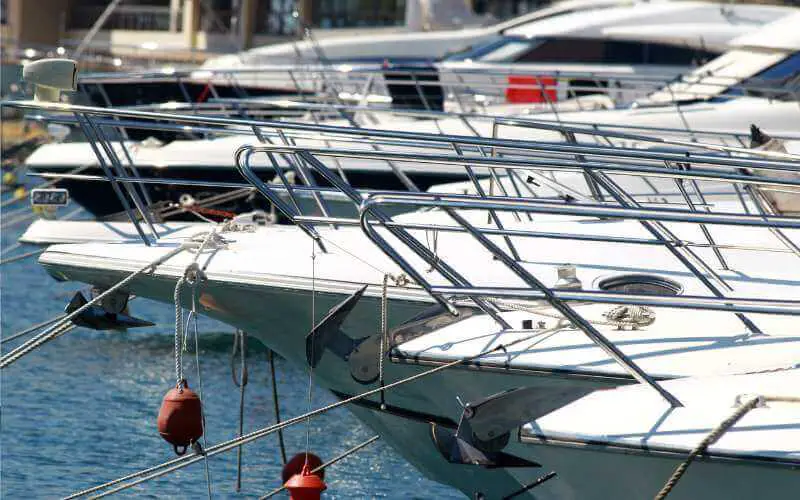
Differences in Power and Propulsion
When it comes to power and propulsion, yachts and boats have some key differences. Yachts are often equipped with larger, inboard engines designed for speed and endurance. In contrast, boats may have outboard motors that are smaller and better suited for recreational purposes.
Another key difference relates to the type of transmission used. Yachts often rely on multi-speed transmissions that allow the engine to operate at various speeds. Boats, on the other hand, may have simpler transmission systems that are designed for a lower level of performance.
The type of propulsion used is also important to consider. Yachts may be propelled by jets, controllable pitch propellers or other high-tech means, enabling them to perform well in various conditions. Boats typically rely on simpler propellers unsuited to more demanding environments.
Difference in Price
When it comes to price, yachts and boats are on opposite ends of the spectrum. Boats, being smaller and typically used for recreational purposes, can range from a few thousand dollars to a few hundred thousand dollars.
Yachts, on the other hand, are significantly more expensive. These vessels are often larger and more luxurious, costing several million to hundreds of millions of dollars.
The cost of owning a yacht goes beyond just the initial purchase price. Yachts require significant upkeep, including maintenance, insurance, and docking fees. However, yacht owners are often willing to pay high costs for the prestige and luxury of owning such vessels.
The Difference in Luxury and Comfort
Luxurious yachts have everything from plush interiors with high-end finishes to state-of-the-art entertainment systems. Many yachts also come equipped with luxurious bedrooms, bathrooms, and gourmet kitchens.
In addition to these features, yachts offer expansive decks and outdoor spaces for entertaining guests or simply enjoying the sun and sea breeze.
When it comes to luxury and comfort, there really is no comparison between a yacht and a boat. While boats may be functional for certain activities, such as fishing or water sports, they offer a different level of extravagance than you’ll find onboard a yacht.

Frequently Asked Questions
What is the cost difference between purchasing a yacht and a boat.
Before you set sail, remember, a yacht is not just a bigger boat. The difference between purchasing a yacht and a boat can be significant, with yachts typically costing millions while boats range from thousands to hundreds of thousands.
Are there any legal requirements for operating a yacht versus a boat?
To operate a yacht, you may need a captain’s license and have to follow specific regulations depending on the size of your vessel. For boats, requirements vary by state and type of boat but are generally less strict.
How does the size of a yacht compare to the size of a boat?
Yachts are generally larger than typical boats, ranging from 33 feet to over 160 feet in length. However, the size distinction between a yacht and a boat needs to be clearly defined and can vary depending on personal perception.
Are there any specific maintenance requirements for a yacht that differ from those of a boat?
Yachts require meticulous maintenance to ensure they remain seaworthy. This includes regular inspections, cleaning, and repairs. These tasks are more complex and costly than those typically required for boats but crucial for the safety of all onboard.
What is the largest yacht in the world?
As of 2023, the largest yacht in the world is the SOMNIO , measuring 222 meters (728 feet) in length. The yacht is under construction and due for launch in mid-2024.
A yacht can be likened to a floating mansion, replete with lavish amenities and luxurious features, often owned by affluent individuals who relish time at sea. These vessels boast multiple decks, spacious cabins, and even swimming pools.
In contrast, boats come in various shapes and sizes, ranging from small dinghies to large commercial tugboats. While some boats offer basic amenities like a small cabin or restroom, they cannot compete with the luxury of a yacht.
The primary distinction between a yacht and a boat lies in luxury and comfort. Yachts epitomize extravagance, providing amenities akin to a high-end hotel suite, while boats prioritize practicality and functionality.
Ultimately, choosing between a yacht and a boat depends on personal preferences and intended use.
Boat Collisions: How to Avoid Collisions with Another Boat
Boating can be a fun and relaxing activity that many individuals enjoy. Whether cruising along the coastline, fishing with friends,
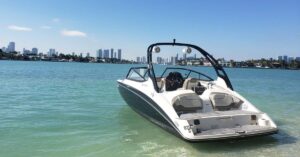
What is a Jet Boat? Propulsion System, Types, Pros and Cons
Jet boats are thrilling, high-speed watercraft making waves in the boating industry. Unlike conventional boats, a jet boat uses powerful

How to Steer a Boat: Mastering the Art of Boat Steering
If you’re ready to embark on a boating adventure and take hold of the helm, it’s time to dive into
Workshop Insider Newsletter
Be a workshop insider get our latest collection of news and announcements delivered to your inbox..., latest articles.
- September 12, 2023
The Ultimate Guide to Pipeliner Welding Hoods: Features, Benefits, Buying Guide, and Best Practices
- Welding Helmets Buying Guides
- September 11, 2023
- September 10, 2023
J-B Weld Removal: How to Remove JB Weld from Metal, Plastic, Skin, and More!
- Mechanical Engineering , Welding Technology
- August 19, 2023
- August 17, 2023
What are Bellows on a Boat: Everything You Need to Know
- August 16, 2023

- Privacy Policy
- Terms of Use
- Affiliate Disclosure
Click on the button to load the content from www.googletagmanager.com.
Load content

- Tailored Vacation Planner
- Cabin Yacht Charter
- Family Sailing Holidays
- Romantic Sailing Vacations For Couples
- Sailing with friends
- Greece all inclusive yacht charter
- Croatia all inclusive yacht charter
- Food & Wine Routes
- Yacht search
- Luxury sailing
Boat vs. Ship vs Yacht: What’s the Difference?

Language is a tricky thing, and picking out the differences between similar terms can be confusing. This is especially true when some of the definitions overlap. This is the case with the case of boat vs. ship vs. yacht . What’s the difference? We know in our gut that there are differences between these three seafaring vessels, but unless you’re a harbor master do you really know what counts as what?
Let’s get into some definitions, and we’re going to start with the easiest to explain: What is a yacht? What is a ship? And what is a boat?

Yacht vs. Ship vs. Boat
What is a yacht.
A yacht, I think everyone would agree, is fancier than a ship or a boat. “Yacht” infers some amount of luxury , and definitely recreation. There’s also something to be said about size. A yacht tends to be anywhere between 35 feet up to 160 feet. And some yachts, known as superyachts, go even beyond that. (Jeff Bezos just built a 417 foot yacht, but that’s really breaking yacht records.)
Because of the size, yachts tend to operate in larger bodies of water–generally the ocean. Yachts are able to handle rougher ocean waves, and they are also equipped with more advanced navigation and guidance instruments than smaller boats. Likewise, a yacht tends to have a full crew to help with the navigation, engineering, repairs, as well as having stewards that serve the yacht’s guests. This can be anywhere from a crew of four or five up to a crew of a few dozen on large yachts.
One interesting thing to note is that outside of the United States, a yacht refers to a sailboat , and a motorized yacht is called a “motor yacht”.
So, is a yacht a boat? Yes, technically a yacht is a boat. But a yacht is a very specific kind of boat.
Want to hop aboard?
Book your dream sailing vacation in top sailing destinations!
- Explore your charter options
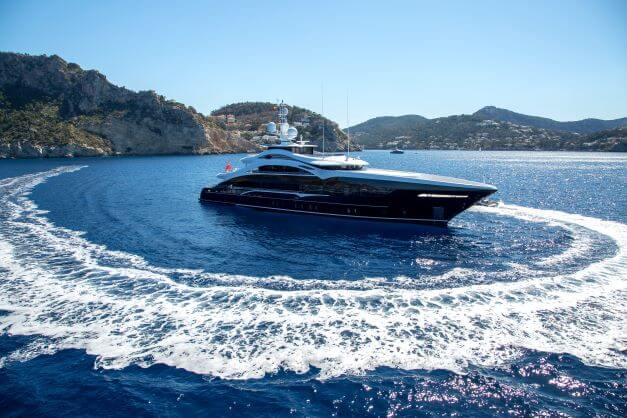
What is a Ship?
The term ship is most commonly associated with a very large boat, and something that is not as fancy as a yacht (one exception is that cruise ships can still be very fancy, but are referred to as ships because of their size and power.)
Ships are generally so large that they would never be found in a lake, with some exceptions for the Great Lakes, and are made for navigating the high seas of the open ocean. An ship can refer to a cruise ship, a naval ship, a tanker, a container ship, and many other commercial vessels.
Ships tend to have advanced navigation and technology, but much more advanced than that of a yacht due to the size, the speed, and the routes that a ship will take. They are meant to be traversing the open ocean for very long periods of time, from one continent to the next, while a yacht may only rarely set across the ocean and most often stays somewhat near land.
A ship will also have a much larger crew than a yacht or a boat. Ships are typically so large that they need not only one trained navigator but a set of navigators, plus an entire engineering team, and includes many more positions.
Finally, a ship is meant to carry things. This may be passengers, yes (in reference to cruise ships and some navy ships) but most ships are for carrying cargo–or even carrying equipment to do work on other ships including repair work or refueling.
What is a Boat?
Well, a boat is harder to define, because a yacht is technically a boat, and a ship is technically a boat. But when people refer to boats, they are almost always referring to something smaller than either a yacht or a ship. Boats may be motorized, like a speed boat, or they may sail, or they may be man-powered, like a rowboat or a kayak. Really, anything up to and including a liferaft, can be called a boat.
(As a side note that will just muddy the waters even further, submarine captains are adamant that their subs are boats. They are not ships.)
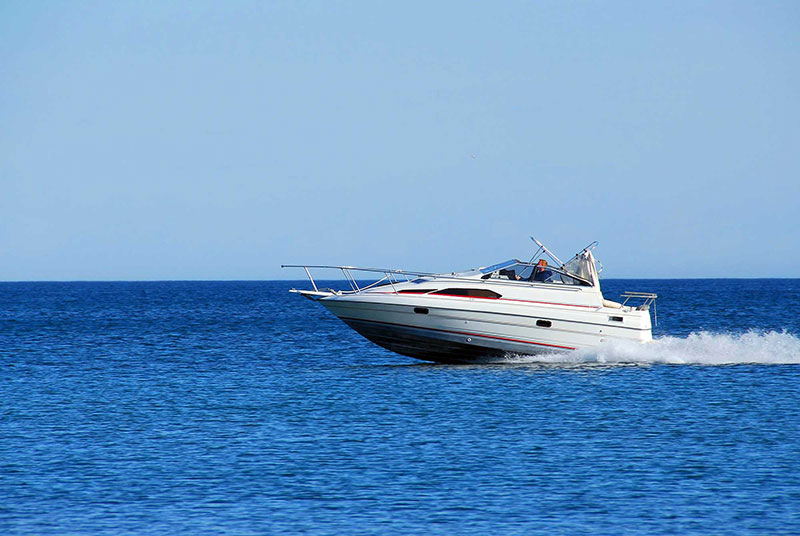
So, Boat vs. Ship Vs. Yacht?
Ultimately it comes down to this: all three of them are boats, but yachts are fancier, larger, and used for recreation, and ships are even larger, used commercially or by the navy, and are meant to cross oceans. The dividing line is sometimes thin, but generally speaking, when it comes to boats vs. ships.vs. yachts you can go by the adage “ I know it when I see it .”
Share article:
Have a question.
We have answers to your questions. So don’t hesitate to get in touch with our team today!
- GET MORE INFO
Feel free to ask us anything. All hands on deck. Let's sail
Thank you for sending us an inquiry, thank you so much for your enquiry.
- The Inventory
When Is a Ship a Yacht, and When Is It Not?
The difference between the two broad categories is determined by one key factor..
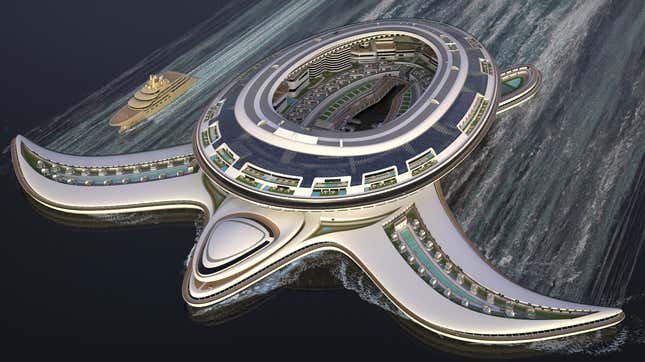
Yachts have been in the news a lot more frequently in recent years. There have been stories like when a Dutch yacht builder requested to temporarily dismantle an iconic bridge in Rotterdam to get a 417-foot-long sailing yacht commissioned by Jeff Bezos out to sea, or when authorities around the world seized the yachts of Russian oligarchs in the wake of Russia’s invasion of Ukraine. Usually, the most notable yachts have the prefixes super-, mega- and even giga- attached to convey their truly enormous sizes relative to most other privately-owned vessels.
As a result, ‘yacht’ as a term has basically become meaningless just by the sheer proliferation of private ships in recent years that defy all potential superlatives. It’s like when you say a word so often that it loses all its meaning. Why are there so many more huge luxury maritime vessels in the world? Rising levels of global wealth inequality? Technical innovation? I don’t know. The Pangeos is the latest planned monument to ostentatious wealth. The 1970-foot-long turtle-shaped ship is the brainchild of Italian designer Pierpaolo Lazzarini. However, this self-declared terayacht is not a yacht by definition.
The only distinction between a yacht and a ship is simple: It is the vessel’s intended purpose. When you enter a foreign country, every customs agent will ask, “What is the purpose of your trip, business or pleasure?” It is the same when categorizing large water vehicles. The sole purpose of a yacht is recreation. If the craft has any other intended purpose, such as naval warfare or maritime commerce, it’s a ship. The U.S.S. Gerald R. Ford , a nuclear-powered U.S. Navy aircraft carrier, and the Carnival Celebration, a 5,280-passenger Carnival cruise ship , are both ships.
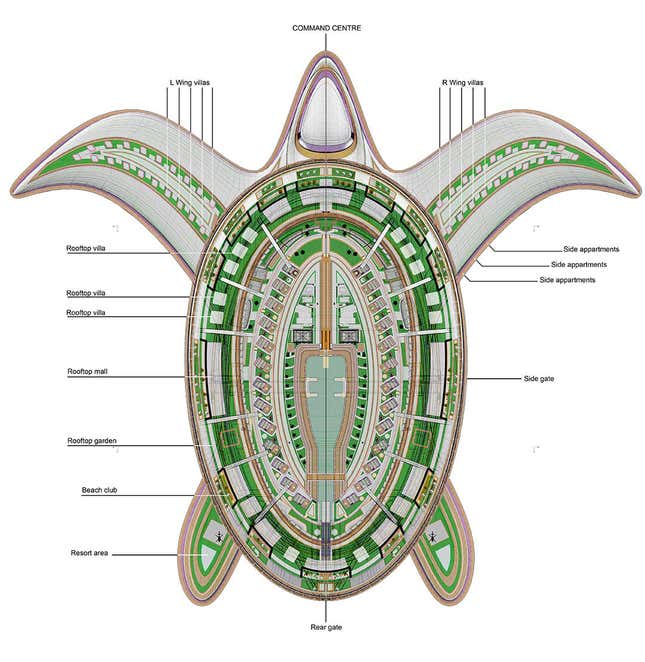
The plans for the Pangeos might feature private vacation villas and apartments. However, the absurd craft would also include also shopping malls and a hotel resort, making the Pangeos a ship. The Pangeos, named after the prehistoric supercontinent of Pangea, will likely never be built due to the ship’s $8 billion price tag.
Besides ship and yacht, boat is another commonly used term. The definition of a boat is much more vague and open to interpretation. Boats tend to be small personal craft and only carry a few people. Though, it’s common for sailors to refer to vessels of any size or purpose as a boat.
Advertisement

8 Differences Between Yachting and Sailing

Last Updated by
Daniel Wade
June 15, 2022
Unless you are very involved in the sailing community or own a boat of your own, you may think of yachting and sailing as similar.
In a lot of ways they are, after all, both are boats and both spend their time at sea. But, that’s about the end of the direct comparison.
Sailboats and yachts are very different, each with their pros and cons. Whether you are just curious about what the differences are, or are wondering because you plan to buy a boat yourself you’re in the right place. This article lists 8 distinct differences between yachting and sailing.
Hopefully, by the end of this article, you will have a much better idea about which might be better for you. After all, yachting/sailing isn’t for everyone.
Table of contents
One of the biggest differences between a yacht and a sailboat is its size. A sailboat is likely to be much smaller than a yacht. Of course, some sailboats can be bigger than some yachts but if we are working on average sizes a yacht is going to be bigger. The reason that size matters so much when it comes to picking which boat you are going to purchase (sailboat or yacht) is space. The bigger your boat, the more space you are going to have. This may sound obvious but is one of the most important factors about your boat that people often fail to give their full consideration.
Size matters (when it comes to boats). Don’t let anyone tell you otherwise. The size of your boat will factor into almost every single thing you do, every day. The smaller your boat the less room you have for storage, the less room you have for emergency supplies, the less room you have for storing even yourself. Your sleeping quarters are not likely going to be very big, regardless of how big your boat is. Depending on how tall you are every inch of space could matter. If you are 6 feet tall and your sleeping quarters are only just big enough, or worse, too small. You are in trouble. It may not immediately bother you. You may even be able to trick yourself into thinking that you are fine curled up into a ball whenever you are trying to sleep. You won’t feel this way for long.
Size matters most when there are more people on your boat than just yourself. If you are planning on living on your boat solo you have a huge advantage space-wise. Whether you have 1 person or multiple you will still need the same kit. A watermaker , water storage, food storage, a first aid kit, a fishing rod, etc. You won’t need 3 first aid kits if you have 3 people on board. All of this means the biggest difference between living solo and living with others is the sleeping room. If you are living solo on a boat that can in theory sleep 4, congrats, you now have a whole lot more storage.
Conversely, if you are planning on living on your boat with someone (perhaps your spouse) then space matters even more. Two people need to be able to move about comfortably. Just because your little sailboat can sleep two doesn’t mean two people will be able to live on it comfortably. If there is more than one of you, you may be better off with a yacht.
For the most part, the yachts are going to be more expensive. Sometimes a whole lot more. For a few reasons, mostly material and technology. The more modern a boat is the more expensive it is likely to be. This isn’t always the case, it is for the majority of the time though. If the price is going to play a big part in which boat you choose to buy here is something you may want to consider; just because a yacht can cost more doesn’t mean you shouldn’t get one. If you are on the fence, it is almost always to spend the extra money on something bigger and better.
When you buy a house, it is not uncommon to buy one to fix it up. Making little repairs and upgrades here and there, in some cases even building an extension. This doesn’t work with boats. The boat you buy is the boat you get. Sure, it can be improved. Repainted, renovated, modernized, but for the most part, it will stay the same size. You need to treat buying the boat the same as you would buying a car in this way. You wouldn’t buy a small hatchback and then build another story on it. The size boat you buy is the size boat you are stuck with. If you need more room, you will need another boat. It will work out much cheaper in the long run if you buy one expensive boat than having to buy a second slightly cheaper one because the first wasn’t up to scratch.
How much the crew will factor into your choice largely depends on budget and the size of the vessel you have your eye on. If you are planning on buying a sailboat, you aren’t going to need (or want) any kind of crew. You are the whole crew, except maybe your family/friends if they happen to live on your boat with you. If you have a yacht, however, its a completely different story. If you are planning on living aboard your yacht you may need one or two crew members to help you out. Even if you are fulfilling the most important role (captain), there will still be lots to do. Navigation, maintenance, and engineering may not be your forte.
If you are planning on buying a sailboat, you can handle everything yourself. There are relatively few computer components that will need working on and chances are you won’t have an engine. Repairs to a sailboat are not easy per se, they are just more manageable for one person. Changing a sail is much easier than repairing an engine. In severe conditions, a small sailboat is simply easier to keep an eye on than a huge yacht. A yacht may require, at the very least, another pair of eyes.
4. Whether or not there is a sail
This difference is purely aesthetic for the most part. Whether or not there is a sail. A sailboat, unsurprisingly, will always have a sail. The nail is how the boat harnesses the wind and what drives it forward. Sailing can be done anywhere, anytime, so long as the weather permits it. Yachting, on the other hand, can be far more limiting. A yacht typically won’t have a sail, which can be seen as either a positive or a negative depending on your outlook. Heres why.
If you are looking for a vessel that is easier to handle, you could argue that a yacht would fit those criteria better. Sure, the computer components are a little more complex and there is more to handle, but sailing itself will be easier. If you have to manage a sail, it can be pretty difficult in stormy conditions. You cant control your sails from inside the cabin. You can, however, steer your yacht from the comfort of the inside.
The advantage of having a sail, as opposed to just an engine, is that you don’t need to worry about fuel. Fuel is not only expensive but a real hassle. You must always keep an eye on your fuel levels when making long voyages or else you risk breaking down at sea. A sailboat can sail so long as there is wind. If you have an extra sail onboard, chances are you will be fine no matter what happens. You are much less likely to get stuck at sea.
5. Engine size
Some sailboats do have motors, albeit small ones. It could just be a trolling motor or as big as a 2 stroke. Regardless of what engine size you have, it is never going to be your primary power source. If you have sails you get your power from harnassing the wind. This, again, can be seen as either good or bad. If you have a small engine you have less to worry about. If you only have the most basic mechanical skills and knowhow you will probably be fine.
A yacht, on the other hand, is a whole different beast. If you don’t know how to work on your yacht in the engine room and you break down you are in real trouble. Owning a yacht can be far more complex than owning a sailboat in this regard. If you don’t anticipate learning how to make these repairs yourself, you are going to need to hire someone who will. Its no good just relying on the marina workshop or a local mechanic, if you are at sea there will be no way for them to get to you. Hiring a crew member with good mechanical abilities isn’t going to be cheap. It is a recurring cost you may want to factor into your budget when deciding whether or not a yacht is right for you.
6. Where they can sail
Big yachts cannot sail in shallow waters. If you are planning on sailing in places with shallow, shale filled, waters then a sailboat is the way to go. The Caribbean, for example, can be hard to navigate in a yacht. At least, harder than it would be with a sailing boat. On the other hand, a yacht can go to many more places than a sailboat.
You could, in theory, sail across the Atlantic in a small sailboat . But, would you want to? It is very dangerous and your boat might not hold up to the intense wind and waves. Additionally, if you are on a sailboat you might be the only crew member. This means there will be no one around to help you should the worst come to fruition, far out at sea. It can be done, you can sail across the Atlantic. But you probably shouldn’t.
7. Technology
In regards to technology, not just whether you are choosing a sailboat or a yacht must be given consideration. How old the individual vessel is, is equally important. An older yacht may not be as technologically advanced as a brand new sailboat . If you do choose to buy a yacht, better technology can open a lot of doors for you. First of all, it can make working on your boat a lot easier. If you have the capability of setting up a fully functioning office with wifi there is no reason you couldn’t just work remotely from your boat.
Technology also opens many new routes for you to take regarding the act of sailing itself. You could sail across the Atlantic with a sailboat, but it would be very risky and very difficult. With a yacht, on the other hand, it can be far easier. Your yacht will come equipped with advanced navigational systems, warning and guidance systems, and much more safety features than a sailboat would. A yacht will be able to plot your route from point to point. On a sailboat, you may not have that luxury.
8. Material
Material matters, whether it is affecting the cost or the sturdiness, it is something to consider. A yacht will be made of fiberglass, carbon fiber, and metals such as titanium. A sailboat, on the other hand, will likely be made from wood or fiberglass. If you are looking for safety and sturdiness above all, and the price is no problem, a yacht will be far safer for you. On the other hand, a sailboat might have the aesthetic you are looking for. You may want a wooden sailboat specifically because you think it looks better.
The material can also factor into how easy it is for you to make repairs. It is a lot easier to patch up a wooden boat than a metal one. With wood, you can make some cowboy fixes on the fly and they will likely hold up until you make it to port. With a yacht, you will need many special tools and training to make big repairs. Again, you may need to hire a crew member to handle that for you on a yacht.
Hopefully, you now have a pretty good idea about the differences between yachts and sailboats. They each have their pros and cons, and can both offer you a world of excitement and adventure. Which boat would be best for you depends solely on your needs. There is no right or wrong answer when it comes to which boat to choose, just go with your gut instinct. Hopefully, this article has made the decision a little easier. At the very least.
Related Articles
I've personally had thousands of questions about sailing and sailboats over the years. As I learn and experience sailing, and the community, I share the answers that work and make sense to me, here on Life of Sailing.
by this author
Learn About Sailboats
Most Recent

What Does "Sailing By The Lee" Mean?
October 3, 2023

The Best Sailing Schools And Programs: Reviews & Ratings
September 26, 2023
Important Legal Info
Lifeofsailing.com is a participant in the Amazon Services LLC Associates Program, an affiliate advertising program designed to provide a means for sites to earn advertising fees by advertising and linking to Amazon. This site also participates in other affiliate programs and is compensated for referring traffic and business to these companies.
Similar Posts

Affordable Sailboats You Can Build at Home
September 13, 2023

Best Small Sailboat Ornaments
September 12, 2023

Discover the Magic of Hydrofoil Sailboats
December 11, 2023
Popular Posts

Best Liveaboard Catamaran Sailboats
December 28, 2023

Can a Novice Sail Around the World?
Elizabeth O'Malley

4 Best Electric Outboard Motors

How Long Did It Take The Vikings To Sail To England?

10 Best Sailboat Brands (And Why)
December 20, 2023

7 Best Places To Liveaboard A Sailboat
Get the best sailing content.
Top Rated Posts
Lifeofsailing.com is a participant in the Amazon Services LLC Associates Program, an affiliate advertising program designed to provide a means for sites to earn advertising fees by advertising and linking to Amazon. This site also participates in other affiliate programs and is compensated for referring traffic and business to these companies. (866) 342-SAIL
© 2024 Life of Sailing Email: [email protected] Address: 11816 Inwood Rd #3024 Dallas, TX 75244 Disclaimer Privacy Policy
- Frank Magazine
- Denison History
- Virtual Tours
- Alaskan Yachts
- Azimut Yachts
- Back Cove Yachts
- Beneteau Yachts
- Benetti Superyachts
- Bertram Yachts
- Boston Whaler
- Broward Yachts
- Buddy Davis Sportfish
- Burger Yachts
- Cabo Yachts
- Carver Motoryachts
- Center Console
- Chris-Craft Yachts
- Cruisers Yachts
- DeFever Trawlers
- Dufour Sailboats
- Fairline Yachts
- Feadship Yachts
- Ferretti Yachts
- Formula Yachts
- Fountaine Pajot Cats
- Grady-White
- Grand Banks Trawlers
- Hargrave Yachts
- Hatteras Yachts
- Hinckley Picnic Boats
- Horizon Yachts
- Hydra-Sports
- Intrepid Boats
- Jarrett Bay Sportfish
- Jeanneau Yachts
- Kadey-Krogen Trawlers
- Lazzara Yachts
- Luhrs Sportfish
- Marlow Yachts
- Maritimo Yachts
- Marquis Yachts
- McKinna Motoryachts
- Meridian Yachts
- Midnight Express
- Mochi Craft
- Neptunus Motoryachts
- Nordhavn Trawlers
- Nordic Tugs
- Ocean Alexander Yachts
- Offshore Yachts
- Oyster Sailing Yachts
- Pacific Mariner Yachts
- Palmer Johnson Yachts
- Pershing Yachts
- Prestige Yachts
- Princess Yachts
- Pursuit Yachts
- Riva Yachts
- Riviera Yachts
- Sabre Downeast
- San Lorenzo Yachts
- Sea Ray Boats
- SeaVee Central Consoles
- Selene Trawlers
- Scout Yachts
- Sunseeker Yachts
- Tiara Yachts
- Trinity Superyachts
- Viking Yachts
- Westport Yachts
Yacht, Superyacht, Megayacht…What’s the Difference?
A deep dive into yacht types.
In the very technical, precise, and number-loving world of yachting–be it hull length, maximum speed, year built, and so much more–there seems to be much confusion in the categories of yacht types. Those in and out of the yachting industry often hear the terms yacht, superyacht, and even megayacht thrown around casually, and, quite often, interchangeably. So what is a superyacht, really? Is the term “yacht” all-encompassing? Is “gigayacht” really a thing? Do exact numbers come into play? Read on for a deep dive into the different types of yachts.
What Is a Yacht?
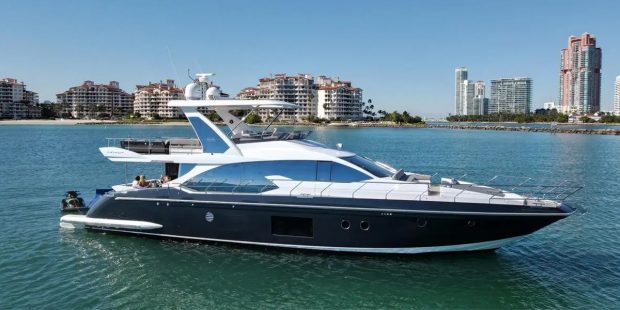
While the term “yacht” technically refers to any boat–sailing or motorized–that has sleeping accommodations aboard, the word is typically used for vessels under 80 feet in length. Usually used for pleasure, yachts can also be categorized as vessels specifically used for racing and/or cruising. While still the dream of many, the general term “yacht” usually refers to the “smaller” (we use that word very lightly) boats you may see cruising exotic locations.
Check out this beautiful yacht: CERULEAN | 66′ Azimut 2018
What Is a Superyacht?
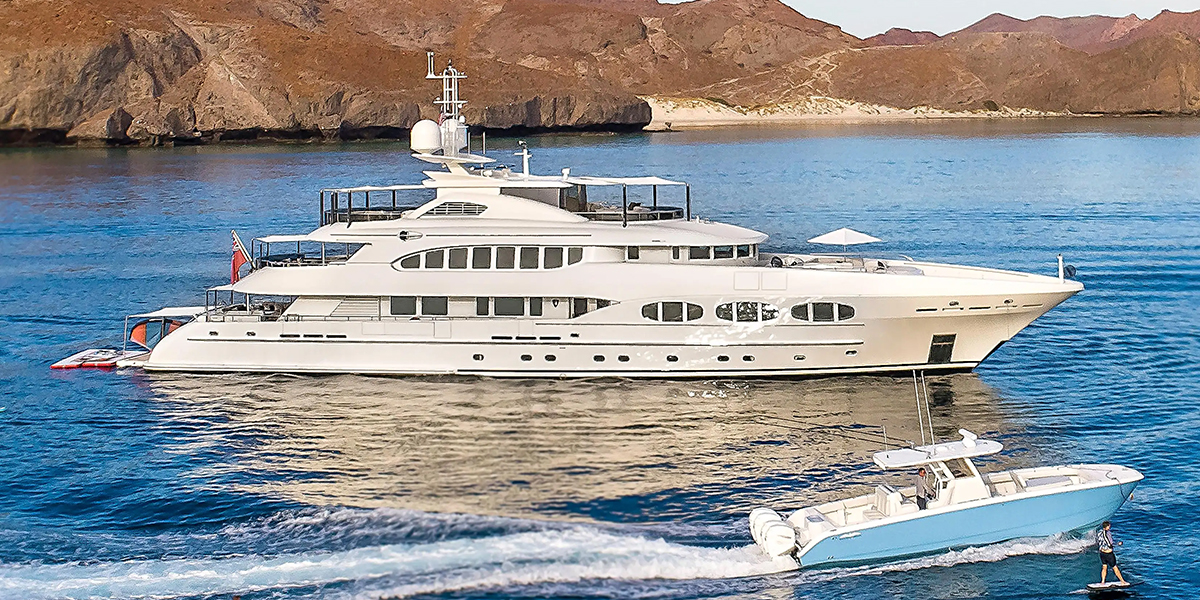
Much like a yacht, a superyacht is also a luxurious vessel used for pleasure; the distinction is in its size. Much of the confusion between whether a vessel falls under the yacht, superyacht, or even megayacht category is still pretty unclear amongst industry professionals. The numbers vary depending on who you ask. Generally speaking, though, a superyacht is usually a yacht whose length exceeds 80 feet. Since it’s all so unclear, we just like to think of it in approximate rather than exact terms: a superyacht is a really large yacht. Superyachts usually have a professional crew manning the vessel.
Spot a stunning superyacht: ODYSSEA | 154′ Heesen 2012
Megayacht: Myth or Fact?

But here’s where things get really puzzling. What really is “large”? Where on the spectrum do different yachts fall? And where does it end? Some industry experts have gone so far as to categorize some of the more massive yachts as “megayachts”. If “superyacht” wasn’t impressive enough, this added term has caused even more perplexity in the wide sea that is the yachting business. While the majority have not necessarily adopted this newer lingo, those that have usually use the term to roughly describe exceedingly large yachts, usually over 200 feet in length. Depending on who you ask, though, some pros argue that the term “megayacht” shouldn’t even be used.
Take a peek at this majestic megayacht: MOCA | 208′ BENETTI 2016
Going Gaga for Gigayachts
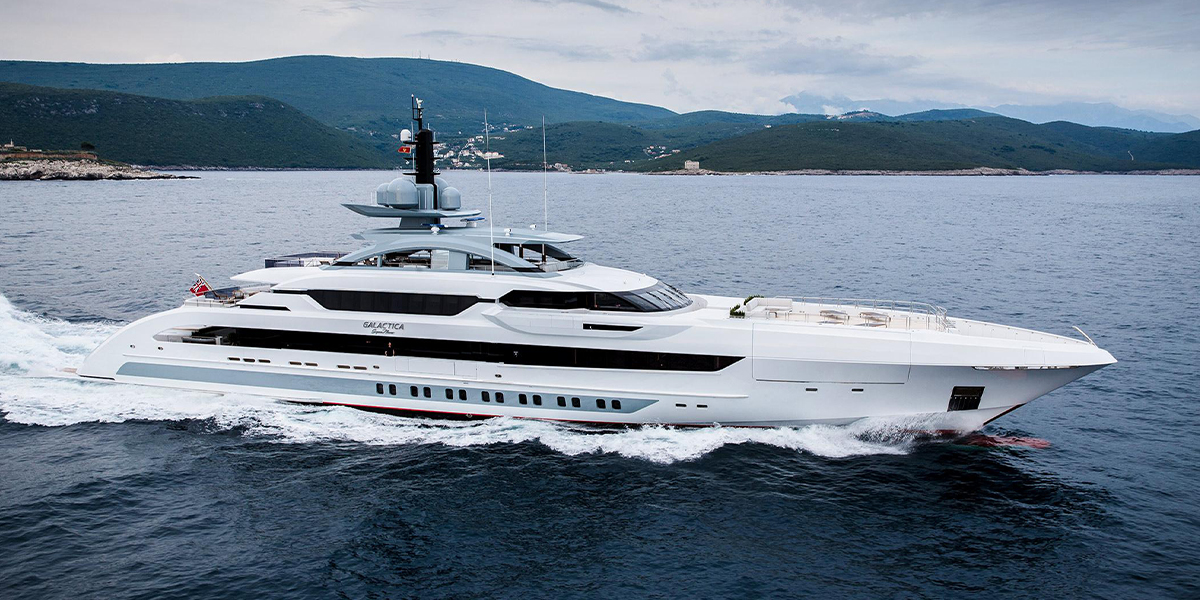
If yacht categories weren’t confusing enough, plus the arguments over the term “megayacht”, some shipbuilders have recently gone one step further, despite it all, and adopted yet another term for the most gigantic, crème de la crème of yachts: gigayachts. While the lines for this category are so completely blurred, it seems that these colossal yachts usually teeter over the 220-foot mark. An important factor that those who actually use this term highlight is that gigayachts are almost always custom-built, with the owner personalizing the boat to his or her liking and preferences.
Go gaga for this gigayacht: GALACTICA SUPER NOVA | 230′ Heeson 2017
Does Size Really Matter?
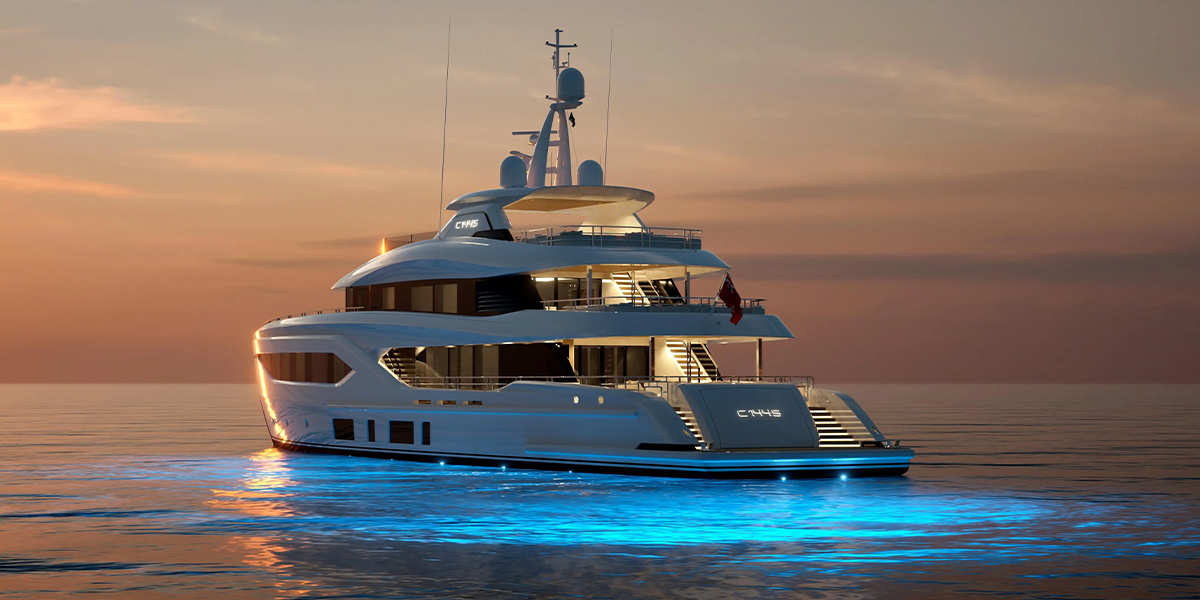
Other than literal size–mostly gauged and compared by the length of the vessel–you may be wondering what really is the difference between all these types of yachts. Some may think: the bigger the better . This all depends on what you value most. Usually, the bigger the yacht, the bigger the crew. With more crew members available to maintain a ship and serve passengers, often the service aboard superyachts (and megayachts) is of the utmost level. On the flip side, some may feel that regular yachts are more their speed–literally; smaller yachts can sometimes reach speeds that larger vessels can’t match, upping the action. Others feel that the “smaller” (read: yet still big) yachts are more intimate, or even more livable. At the end of the boat day, it is all about personal preference. Just like all the other countless options in the yacht business, there’s more than enough to go around. There’s an ocean of options just waiting out there.
Size up this sizable yacht: C144S Hull #3 | 144′ Conrad 2024
Speak with a Superyacht Specialist:
Latest news.

NEWS | April 10, 2024
High-end tenders: the tender touch.
High-End Tenders: The Tender Touch There are few more exciting (and competitive) sectors of the yachting market today than high-end tenders. This article was written by Kevin Koenig. Photography courtesy of the manufacturers. I’ll admit I’ve been a little bit obsessed with tenders as of

88 Riva 2022 Sold by Drew Offerdahl [BEL SOGNO]
88 Riva 2022 Sold by Drew Offerdahl [BEL SOGNO] BEL SOGNO, a 88′ Riva built in 2022 was sold by Drew Offerdahl, who represented the Seller. Chris Coughlin with Allied Marine introduced the Buyer. BEL SOGNO contains a four stateroom, four head interior layout featuring an abundance of natural

NEWS | April 9, 2024
100 azimut 2006 sold by kit denison & sidney ambroise [cristales].
100 Azimut 2006 Sold by Kit Denison & Sidney Ambroise [CRISTALES] CRISTALES, a 100′ Azimut built in 2006 was sold by Kit Denison, who introduced the Buyer, and Sidney Ambroise, who represented the Seller. CRISTALES contains a four stateroom, five head interior layout. Her features and upgrades include a Seakeeper 35

- Marine Engineering
- Yacht Services
- Yacht Surveys
- Yacht Electrician
- Megger Testing
- Marina Electrical Services
- Industrial Electrical
- Commercial Electrical
- Residential Building Electrical
- LED Lighting
- Industrial Lighting
- Electric Vehicle Charging Stations
- Sales & Parts
- Service Request
- Sales Request

- Privacy Policy
- Terms & Conditions
- RH Marine Group
What’s the Difference Between a Yacht and a Boat?
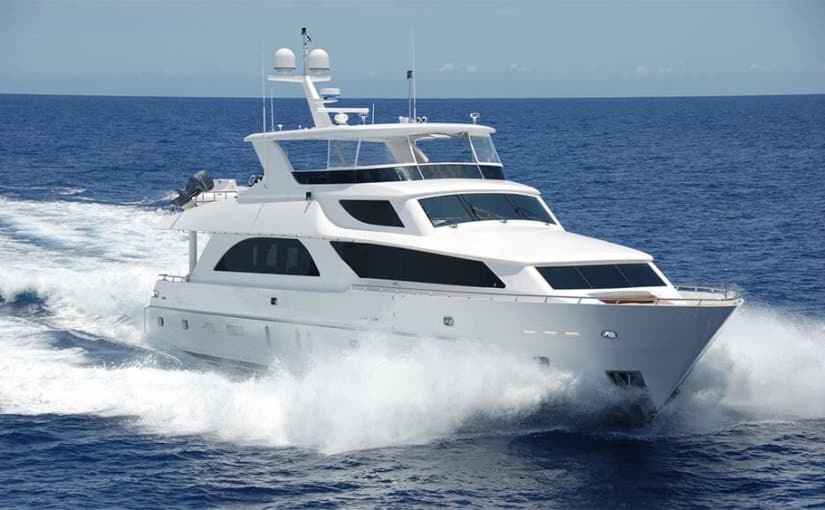
Many boating enthusiasts use the words boat and yacht interchangeably when in reality, they are very different terms. A yacht is a larger, recreational boat or ship. The word “Yacht” comes from Dutch origin and was originally defined as a light, and fast sailing vessel used by the Dutch navy to find and capture pirates. A boat, on the other hand, is smaller in size and can be anything from a fisherman’s boat to a sailboat.
When determining the difference between a yacht and a boat , there are a few main deciding factors including:
Size As previously mentioned, size matters when it comes to differentiating between a boat and a yacht. Yachts can range from about 35 feet in length all the way up to 160+ feet in length, however, most will be somewhere in the middle. Anything over 160 feet would be considered a “Superyacht”. Boats are generally anywhere from 15-30 feet in length.
Where they can operate Smaller boats are usually capable of operating in calm waters like lakes, rivers, and shallow harbors. Some larger boats, usually 20 – 30 feet in length, can also navigate more rough ocean waters. A yacht, on the other hand, is able to sail in deeper, ocean waters and deal with more turbulent seas. Due to a larger size, high tech yacht electronics and guidance instruments, protection from the elements, and a number of other features yachts are far more suitable for longer ocean trips.
Crew While a boat can be operated by just one captain, a yacht typically requires a full crew to help with navigation, maintenance, electronics and engineering, repairs and stewards to cater to the passengers. In reality, it’s a lot more like a small, private cruise service than an afternoon on the boat with your friends.
Propulsion Depending on the boat, it may operate solely using a sail and the wind, or one or more inboard or outboard motors. While some larger boats can mount very large engines to create some real speed on the water, these engines do not match the power of most yacht engines. Yacht engines are much larger in size, can produce considerably more power – in some cases up to 800hp, and are capable of running much longer distances.
Navigation and technology While some boats may have advanced marine electronics and navigation systems, it’s more of a requirement when it comes to yachts. When making trans oceanic trips it is not only important that you are able to navigate with precision, but also that you can detect other boats or objects that you may not be able to see and understand the performance of your vessel.
Tess Electric is a leading provider of marine electronics, marine electrical services , and marine engineering services to owners and crews of yachts and superyachts in Fort Lauderdale, FL. If you’re looking to work with an experienced team of marine electrical contractors, contact us today.
Recent Posts
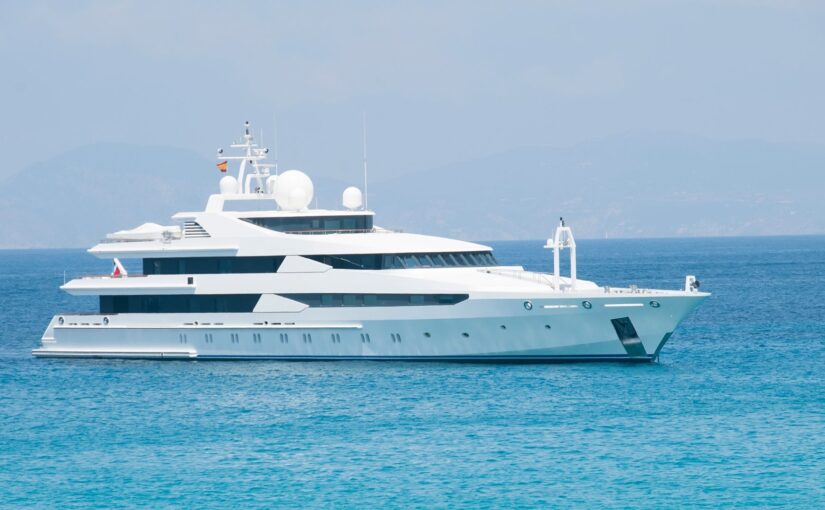
We are a Marine Electrical Service Company servicing mostly in the Large Mega Yacht Industry and Marine Land Installations (marinas, resorts, apartments, docks, etc). We have mobile Technicians who cover the tri county area (Broward, Palm Beach and Dade) in their fleet of vehicles.

- Marine Electrical
- Land Division
- ShipServ Ship Supply
Our Services
- Fluorescent To LED Conversion
- All Land Services
- All Marine Services
Sales & Support
- Sales Request Form
Our Location
Tess Electrical LLC
Yacht vs. Ship: What's the Difference?
Key Differences
Comparison chart, primary use, crew requirements, design focus, yacht and ship definitions, what is a yacht primarily used for, why are ships essential for global trade, how does a ship differ from a yacht in terms of size, is every luxury boat considered a yacht, how are ships powered, can a ship be used for leisure, is yacht racing a popular sport, how are ships navigated, can yachts cross oceans like ships, what type of crew does a yacht require, why are ships crucial for naval defense, how is the speed of yachts compared to ships, are ships and yachts subject to maritime laws, do yachts have classifications, what's the largest type of yacht, can ships be privately owned like yachts, how long can ships stay at sea, what amenities can be found on luxury yachts, can yachts be chartered, how are ships built to withstand rough seas.

Trending Comparisons

Popular Comparisons

New Comparisons


What’s the Difference Between a Catamaran and a Yacht? (Here’s What You Need to Know)

Are you curious about the differences between a catamaran and a yacht? Are you trying to decide which one would be better suited for your next sailing adventure? If so, you’re in the right place! In this article, we’ll explore the differences between catamarans and yachts, from their design and structure to their performance and speed, as well as the luxury amenities they offer and the various uses of each.
Read on to find out more!
Table of Contents
Short Answer
A catamaran is a type of boat with two parallel hulls of equal size, which are connected by a frame.
These boats are typically used for recreational sailing, fishing, and cruising.
A yacht, on the other hand, is a larger, more luxurious boat that is designed for recreational activity, such as racing or cruising.
Yachts are typically much larger and more expensive than catamarans, and they often have more amenities and features.
Yachts are often used for pleasure cruises and for competitive sailing, while catamarans are often used for fishing, day trips, and cruising.
What is a Catamaran?
A catamaran is a type of recreational boat with two parallel hulls connected by a deck.
This design makes them incredibly stable on the water and allows for more space.
Catamarans are typically wider than yachts and feature two hulls of equal size.
They are usually powered by two or more outboard motors or an inboard engine, and are designed for both speed and stability.
Catamarans are ideal for fishing, cruising, and adventure, and can accommodate up to 12 passengers in comfort.
The hulls are often made of fiberglass and can range in size from 20 feet to over 50 feet long.
They are also great for entertaining, as they have plenty of room for lounging, dancing, and dining.
Catamarans often feature amenities such as cabins, kitchens, bathrooms, and outdoor seating areas.
What is a Yacht?

A yacht is a luxury recreational boat designed for pleasure cruising.
Yachts are usually characterized by their sleek, single-hulled design, which is intended to maximize speed and performance on the open waters.
Yachts come in a variety of sizes, from smaller vessels that are ideal for day trips and coastal cruising, to larger vessels that can take on extended ocean voyages.
Yachts are typically outfitted with luxurious amenities such as air conditioning, gourmet kitchens, and spacious cabins.
They are often used for entertaining and luxury travel, and can provide an unforgettable experience for those lucky enough to charter one.
Design & Structure Differences
When it comes to the design and structure of catamarans and yachts, there are some key differences.
Catamarans usually feature two parallel hulls connected by a deck or platform.
Yachts, on the other hand, are typically constructed with only one hull.
This design allows for greater performance and speed.
Catamarans are known for their wide, stable platforms, which make them a great choice for fishing, cruising, and other activities.
The two hulls also provide more space for amenities and storage.
Yachts, on the other hand, are designed to be sleek and fast, with an emphasis on performance and speed.
They are often outfitted with luxury amenities and can be used for luxurious and stylish cruises.
The construction materials of catamarans and yachts can also vary.
Catamarans are usually constructed with fiberglass, while yachts can be built with wood, fiberglass, steel, or aluminum.
This can have an effect on the overall weight and performance of the vessel.
In terms of size, catamarans can range from small to large, while yachts tend to be larger.
Catamarans are typically smaller, but can still be quite spacious and luxurious.
Yachts can range from small to very large and can include multiple decks and amenities.
Overall, catamarans and yachts have some key differences in their design and structure.
Catamarans are typically wider and feature two parallel hulls connected by a deck or platform, making them incredibly stable on the water and allowing for more space.
Yachts, on the other hand, are usually one-hulled vessels that focus on performance and speed.
They often feature luxury amenities and can be used for luxurious and stylish cruises.
Catamarans are great for more adventurous activities like fishing and cruising, while yachts are perfect for luxury travel and entertaining.
Performance & Speed

When it comes to performance and speed, there is a clear distinction between catamarans and yachts.
Catamarans have a wide and stable design that makes them great for cruising and fishing, but not ideal for speed.
The two hulls provide a stable platform, but they also create drag, which can slow them down.
Yachts, on the other hand, focus more on performance and speed.
They often come with powerful engines and sleek designs that allow them to reach higher speeds.
They also feature luxury amenities that make them ideal for cruising in style.
Additionally, many yachts have advanced technology like navigation systems and autopilot, which can further enhance their performance and speed.
When it comes to performance and speed, its important to consider your intended use.
Catamarans are great for fishing and cruising, but they wont get you there as quickly as a yacht.
If youre looking for a vessel for luxury travel and entertaining, then a yacht is the better choice.
On the other hand, if youre looking for a boat for fishing and adventure, then a catamaran is the way to go.
Luxury Amenities
When it comes to luxury amenities, yachts are the clear winner.
Yachts are designed for luxury travel, entertaining, and showing off.
They feature spacious cabins, plush furnishings, high-end electronics, and all the comforts of home.
Many yachts come with amenities such as hot tubs, saunas, and wet bars.
They also feature multiple decks, allowing for greater flexibility and more room for guests.
Catamarans, on the other hand, are designed more for practicality than luxury.
They typically come with basic amenities such as sleeping quarters, a kitchen, and a bathroom.
While they may have some of the same features as yachts, they usually lack the same level of luxury and comfort.
However, many catamarans come with amenities such as a fishing platform, dive deck, or a sundeck, which makes them perfect for adventure and outdoor activities.
Uses of a Catamaran

When it comes to recreational boats, catamarans are one of the most popular choices.
This is due to their unique design, which features two parallel hulls connected by a deck.
This design makes them incredibly stable on the water and allows for more space than a single-hulled vessel.
Because of this, catamarans are ideal for a variety of activities, from fishing and cruising to adventure and luxury travel.
For those who enjoy fishing, catamarans provide plenty of space and stability to cast, reel in, and store fishing gear.
The deck also provides an ideal spot for anglers to sit and relax as they wait for a bite.
For those who like to cruise, catamarans are also the perfect choice.
They offer plenty of room to store supplies and equipment, and their stability makes them great for entertaining and sightseeing.
Catamarans are also ideal for adventurers who want to explore the open water.
Their wide design makes them great for navigating shallow waters, and their large deck space makes them perfect for carrying all the necessary gear.
Finally, catamarans are perfect for luxury travel.
With their large deck space and multiple cabins, they provide plenty of room for entertaining and relaxing.
Uses of a Yacht
The traditional uses for yachts are typically related to leisure, entertainment, and luxury travel.
Yachts are designed for speed and performance, making them ideal for cruising and sailing in style.
Whether you’re out exploring the waters of the Caribbean or the Mediterranean, you can enjoy the ultimate in comfort and luxury on board a yacht.
Yachts are also perfect for entertaining guests with their lavish interiors and spacious decks.
Depending on the size of the yacht, you can easily fit up to a dozen people onboard, making them great for hosting parties and events.
In addition, yachts are ideal for long-distance travel, allowing you to explore distant destinations and discover new places.
Final Thoughts
When it comes to recreational boats, catamarans and yachts are two popular options.
Catamarans are wider and feature two hulls connected by a deck, making them incredibly stable and providing more space.
Yachts, on the other hand, are single-hulled vessels that are designed for speed and performance, and often feature luxurious amenities.
Catamarans are great for fishing, cruising, and adventure, while yachts are perfect for luxury travel and entertaining.
Now that you know the difference between the two, why not plan your next getaway on a catamaran or yacht?
James Frami
At the age of 15, he and four other friends from his neighborhood constructed their first boat. He has been sailing for almost 30 years and has a wealth of knowledge that he wants to share with others.
Recent Posts
Does Your Boat License Expire? Here's What You Need to Know
Are you a boat owner looking to stay up-to-date on your license requirements? If so, youve come to the right place! In this article, well cover everything you need to know about boat license...
How to Put Skins on Your Boat in Sea of Thieves? (Complete Guide)
There is a unique sense of pride and accomplishment when you show off a boat you customized to your exact specifications. With Sea of Thieves, you can customize your boat to make it look like your...
Yacht vs Sailboat: What's The Difference?
Explore the key differences between yachts and sailboats in our latest blog post. Perfect for travelers deciding on their next nautical adventure.

The world of boats is complicated to decipher because of how many types, models, and brands exist. Yachts and sailboats are two essential types of boats that are immediately recognizable by anyone. With that said, the yacht vs. sailboat debate ultimately comes down to several distinguishing factors between the two.
The main difference between yachts and sailboats is that sailboats have sails and yachts don’t. Sailboats are also smaller than yachts, feature fewer amenities, and cannot move quite as fast. Yachts are also much more expensive to purchase and maintain, and maintenance costs 20% of the initial cost each year which can cost tens of thousands of dollars.
It’s much easier to transport a sailboat than a yacht because yachts have to be shipped on a cargo deck. Conversely, you can attach the average sailboat to a trailer and tow it to a port. Follow along as we highlight the key differences between yachts and sailboats.
What Is The Difference Between a Yacht And a Sailboat?

The main differences between yachts and sailboats come down to size, amenities, and build . They serve the same purpose, but yachts and sailboats differ quite a bit when it comes to design. While not interchangeable, many prospective buyers struggle with whether or not to buy a yacht or a sailboat.
The yacht vs. sailboat debate has been discussed for decades, and it is ultimately subjective. However, many key differences can sway your opinion before you make a big purchase. Let’s take a look at the difference between yachts and sailboats and see why they matter.
Sails are the most immediately clear difference between yachts and sailboats. Sailboats always feature sails, but that’s not usually the case with yachts. The sail on a sailboat helps propel the vessel and is useful whether your boat has an engine or not .
Standard yachts lack sails because it would alter their appearance. Yachts are supposed to look sleek and luxurious which wouldn’t work as well with a sail. With that said, sailing yachts feature sails and are more often used for racing than cruising.
One of the downsides of traditional yachts is that you don’t get the aerodynamic boost that you would get with a sail . If you have a high-powered engine, this isn't a problem, but it will have to work harder without a sail under poor weather conditions.
The average sailboat is smaller than the average yacht. For example, the average yacht measures 78 feet long and the average sailboat measures 30 feet long . Yachts can be as small as 40 feet long or they can even exceed 100 feet long.
The world’s largest yacht measures 511 feet long and it is unsurprisingly owned by a multi-billionaire . Both yachts and sailboats vary in width depending on the floor plan and how many cabins they feature. Sailboats are generally slender because they feature a small galley and don’t typically include a cabin.
A superyacht is defined as a yacht that is 79 feet long or longer. However, you won’t find many superyachts out on the sea because they cost at least $3,000,000 in most cases.
Yachts are almost always much more expensive than sailboats. The difference in cost comes down to the many amenities that yachts are known for as well as the motor and size. Yachts start at $500,000 on the low end, but they can exceed $10,000,000 for superyachts over 79 feet long .
The more expensive a yacht is, the more expensive it will be to maintain because of the fuel demands and part replacements. There is more variety in cost when it comes to sailboats because they are a broad category of vessels. For example, a sailboat with no motor will cost thousands of dollars less than one that is motorized.
A motorized sailboat can cost as much as $250,000 or more whereas one without a motor may only cost $3,500 . Luxury sailboats with cabins can cost $500,000 but without the powerful performance of a yacht. With that said, sailboats cost less to maintain so even buying a high-end vessel may be a worthy investment.
Yachts have a higher capacity than sailboats because of how much bigger they generally are. There are often multiple decks on a yacht which makes it easy to host a large group of guests. Standard yachts can only accommodate 10-12 people, but large superyachts can hold more than double that in some cases .
Sailboats can typically hold 5-10 people, but it depends on the size of the vessel. You can calculate the capacity for a sailboat or yacht by multiplying the length and width and then diving that number by 15. Otherwise, you can simply refer to the capacity as recommended by the manufacturer.
It’s worth noting that boat manufacturers can only provide approximate estimates for capacity. They base the capacity on an average of 150 pounds per person, but that doesn’t apply to everybody.
Yachts are superior to sailboats when it comes to amenities in most cases. Sailboats sometimes feature a few amenities, such as a cabin or bathroom. However, yachts are considered luxury boats, so they are more likely to include special amenities such as built-in speakers and even TVs in some cases .
Some yachts even feature swimming pools and hot tubs, but they come at a premium price. They typically feature at least one deck to accommodate guests and some even feature helicopter pads . You won’t find nearly as many amenities on a sailboat because sailboats are more for practical use.
Larger sailboats may include a private deck and retractable sunshade. Otherwise, there isn’t usually enough space on a sailboat to include luxury amenities such as movie screens and infinity pools.
If you’re looking for a boat with comfortable quarters, then a yacht is ideal for you. Sailboats feature quarters in some cases as well, but yachts specifically emphasize comfort and luxury. Some yachts feature multiple cabins that can be used for lounging and sleeping alike .
You will also find larger cabins in yachts than sailboats which makes them much more comfortable. Yachts also often feature crew quarters because they sometimes require staff to operate the vessel. Sailboats are usually much smaller than yachts, and the cabins are suitably smaller as well.
You won’t likely find many sailboats with crew quarters unless it is a motorized vessel . Many manufacturers let you customize the floorplan and design for a yacht or sailboat. You can add a cabin to a boat that typically wouldn’t feature one, but it will delay how quickly you get it by up to a year or more in some cases.
Performance
Yachts are also faster than sailboats in most cases because of the powerful motor . Sailing yachts offer the best of both worlds because of the aerodynamic boost paired with the motor. Sailboats can still reach high speeds without a motor, especially if the wind is in your favor.
However, sailboats are faster than motorized yachts in some cases and can even reach speeds up to 12 knots or more. Yachts can operate at 10 knots at least, but massive yachts cannot usually maintain a high speed for long. High-performance yachts from bands such as Foners can reach speeds up to 70 knots, but that is rare .
Luxury yachts that measure 30-40 feet long can run at 30 knots in some cases as well. Otherwise, heavy yachts with an underpowered motor may only run at 10-20 knots.
It typically costs more to dock a yacht than a sailboat, but it depends on the size. Marinas charge varying rates to dock based on the location and the size of your boat. Boat length is one of the biggest cost factors, and they typically charge $10-$50 per foot of the vessel .
Yachts and sailboats can be similar in length, but yachts are often longer and wider making them more expensive to dock. Many yachts are considered liveaboard boats which can also add to the cost of docking at a marina. Marinas charge an extra fee if you plan to live on your yacht while docked, and not all of them even allow it .
You will also likely need to pay an extra fee to have your yacht or sailboat pumped at the marina. This is more common with yachts because they almost always feature at least one bathroom, but some sailboats do as well. Pumping may cost as little as $10-$20, but it’s better than having to empty your tank.
Maintenance
Maintenance is a reoccurring cost no matter what type of boat you have. With that said, you will likely need to spend much more to maintain a yacht than a sailboat. Motor sailboats may still require expensive maintenance, but it’s much less than for a yacht.
Yachts require routine maintenance to ensure that the motor and engine can continue to run smoothly. It costs 20% of the buying price per year to maintain the average yacht, and that adds up quickly . Yachts often cost over $1,000,000, so you could potentially spend up to $200,000 per year in fuel and maintenance in that case.
Traditional sailboats only cost an average of $3,500 per year to maintain, but they can cost as little as $1,500. Your maintenance costs may exceed $5,000 per year for a sailboat if it is motorized . Even still, it costs tens of thousands of dollars less per year to maintain the average sailboat than a yacht. It also costs much more to insure a yacht than a sailboat.
Sailboats can typically travel further without needing to stop than yachts. That is because yachts need to refuel which can limit how far you can travel from a port. However, motor sailboats have the same distance limitations as yachts because they rely on fuel.
Traditional sailboats don’t feature motors so they can essentially travel as far as possible until the crew needs to return. Sailing yachts may be able to travel further than standard yachts because of the aerodynamic boost . This can put less stress on the engine which can help save fuel to let you travel further.
Transportation
It’s much easier to transport a sailboat to a port or dock than a yacht. In many cases, you simply cannot trailer a yacht and you need to ship it as deck cargo. You can expect to spend at least $1,000 to ship a yacht as cargo, but it can cost much more for long distances .
Sailboats are easier to transport because you can attach them to a trailer and tow them to a port in most cases. You can tow a sailboat with a trailer as long as it is 22 feet long or smaller. Otherwise, you may need to have your sailboat shipped as cargo like you would need to for a yacht.
Yacht Pros and Cons

Yachts are understandably desirable to many, even if they may seem unattainable. Even still, yachts are complicated just like any type of boat and they have various pros and cons. Let’s take a look at the positive aspects of owning a yacht.
First and foremost, yachts are spacious and comfortable which makes them better than most boats. They almost always feature a large galley and at least one cabin that offers plenty of room. The luxurious appeal of yachts is that they come with many amenities making them akin to a mobile hotel on the water .
Yachts also feature powerful motors that are necessary to move their massive weight. You can fit at least 10 people on a yacht and over 20 on some huge models. This makes them the best boat to take out onto the water if you plan to entertain a large group of people.
- Comfortable cabins
- Plenty of deck space
- Convenient amenities
- Can reach high speeds
The high cost of docking at a marina is one of the biggest downsides of owning a yacht. They are so massive that spending a fortune on docking fees and club memberships is unavoidable. This is especially true if you plan to join a yacht club which can cost $7,000 or more per year depending on where you live.
Another key downside to a yacht is that they are a poor investment. The exorbitant cost of yearly maintenance paired with the depreciating value after using a yacht makes it nearly impossible to turn a profit . It can cost hundreds of thousands of dollars each year to maintain a yacht depending on how much you use it and how much the initial cost was.
- Maintenance costs a fortune
- Expensive to dock
- Requires a lot of fuel
- Needs to be shipped
Sailboat Pros and Cons

Much like yachts, sailboats aren’t without their problems. With that said, sailboats are also incredible vessels and continue to improve with each generation. Let’s take a look at the pros and cons of sailboats.
You can easily maintain a sailboat without spending nearly as much as you would on maintaining a yacht. That is because the engine on a sailboat is much simpler than one on a yacht which makes maintenance easier . You also get a boost from the wind as you move through the water with a sailboat because of how aerodynamic they are.
Another benefit of sailboats is that the engine doesn’t roar loudly likely a yacht does. This helps create a calm atmosphere for everyone on the boat which is essential when you are at sea. Most importantly, sailboats are inarguably much more affordable than yachts so they are easier for the average person to attain.
- Aerodynamic design
- Quiet operation
- Reasonably affordable
- Easy to maintain
One of the biggest downsides of sailboats is that they rely on great weather to operate at the optimal level. This is especially true if your sailboat isn’t motorized or simply has a weak engine that can’t keep up with bad weather. Sailboats are also usually much slower than yachts because their engines are less sophisticated.
They can also be difficult to steer in many cases, especially if you are new to sailing . You will also need to replace the sails several every 10 years or 4,000 hours of use, whichever comes first. Finally, sailboats aren’t known for having great amenities, such consider a yacht if you want luxury features.
- Can’t always reach high speeds
- Doesn’t feature many amenities
- Relies on great weather
- Difficult to steer
- Must replace sails
What Qualifies a Boat To Be a Yacht?

The criteria for a yacht are dubious and frequently, debated, but they typically measure at least 30-40 feet long . Yachts are also almost exclusively luxury boats that feature more amenities than a sailboat, fishing vessel, or pontoon. Most yachts feature cabins, a bathroom, a kitchen, a dinette, and a comfortable galley.
Yachts also typically lack sails, but there are sailing yachts on the market but they are a more recent addition to the world of boats. They also have a unique look that you can recognize right away even if you are unfamiliar with other vessels. Yachts often feature diesel engines that are powerful enough to move such a massive boat, and some of them come with multiple engines .
Can a Yacht Cross The Ocean?
Not all yachts can cross the ocean, but many of them can. It ultimately comes down to the fuel source and what kind of engine your yacht has . Yachts with multiple engines in particular can easily cross the ocean up to 3,000 miles in many cases.
It’s important to check the recommended nautical mileage of your yacht via the manufacturer before you attempt this. Many people live on their yachts, and in this case, supplies are an important factor to consider. It can take over a week to sail 3,000 miles depending on how many stops you make and how fast your yacht is .
In this case, you will need to make sure that your yacht has enough food and supplies to last you for at least a week. Ideally, you should plan a route that will let you stop at ports to refuel, pump your bathroom, and get more supplies to last for the rest of the trip. If this isn’t possible then it’s worth reconsidering and sailing a different route if you’re unsure about your yacht’s capabilities.
Is a Yacht Better Than a Sailboat?
Yachts are better than sailboats if you value amenities and speed . Sailboats don’t always include an engine, but when they do, it’s usually less impressive than a yacht’s engine. However, the sail on a sailboat gives it an aerodynamic boost that yachts simply don’t have.
Yachts are a poor investment compared to a sailboat because of how much they cost to maintain. You may have to spend up to 20% of the initial cost of a yacht per year to maintain the yacht. Overall, yachts and sailboats both have many pros and cons, but sailboats are a more affordable option if you are on a budget.
73 Basic Dutch Phrases for Your Next Trip to Netherlands 🇳🇱
Learn essential Dutch phrases for a smooth trip to the Netherlands. Perfect for travelers looking to connect with locals and enrich their experience.
Win a $500 Flight!
Embark on the adventure of a lifetime! Enter our Dream Journey Sweepstakes for a chance to win a $500 travel voucher, redeemable with any major US airline. Whether it's sandy beaches, bustling cities, or tranquil mountains, your dream destination is just an email away!*
You may also like...

Cost to Charter a Yacht in Turkey
Explore yacht charter costs in Turkey for a dream vacation. Find prices for Fethiye, Bodrum, Marmaris & tips on saving. Ideal guide for travelers.

How To Find a Yacht Job With ZERO Experience
Learn how to land a yacht job with no experience. From STCW certification to crafting the perfect resume, this guide covers essential steps for aspiring yacht crew.

10 Best Online Stores For Boat Parts
Find top boat parts online! Our guide lists the best stores like Wholesale Marine & Marine Engine for quality boat accessories & essentials.

Types of Boat Steering Systems (Pros, Cons, Pricing)
Explore the best boat steering systems, their pros, cons, & pricing for your next trip. Find the perfect fit for safety & smooth sailing. Ideal for travelers.

What Size Trolling Motor For 24’ Pontoon Boat?
Find the perfect trolling motor size for your 24’ pontoon boat with our expert tips on shaft length and thrust requirements for smooth sailing.

How Much Are Malibu Boats?
Explore Malibu boats' prices & features for luxury, watersports, & cruising. Learn why these vessels are a premium investment for enthusiasts & travelers.
The travel site inspired by travelers and locals alike. Find amazing destinations, unique trip ideas, the best hotels, and most comfortable resorts.

IMAGES
VIDEO
COMMENTS
The maritime definition of a yacht is a private pleasure ship of at least 33 feet. At YachtWorld, we tend to consider anything in the 35-40-foot range (or larger) a yacht. Then again, different kinds of boats approach being that long, even some pontoon boats and walkarounds. However, an engine-powered watercraft under 30 feet is not usually ...
The main difference between the two is that a yacht will always look and feel fancier than a boat or regular ship. If it appears and smells luxurious, given its minimum size, it is a yacht. Boats can be built for many things. But yachts are built mainly for fun and leisure.
It also refers to a tender to a bigger boat or yacht. "Ship" is a large commercial boat, often used for distance travel and transport of goods or passengers - cruise ship, container ship, etc. "Yacht" is typically a larger boat with luxury amenities used as a recreational vessel— motor yacht, sailing yacht. "Superyacht" is a ...
Sleek styles and accents tend to come to mind when thinking about yachts; even the difference in materials and design can distinguish a regular boat from a yacht. Price. With their larger sizes and significant levels of comfort and amenities, it's no surprise that most yachts cost much more than their other recreational boat counterparts.
Speed Boat vs Yacht. When comparing a speed boat and a yacht regarding performance, the speeds you can reach with a yacht over 79ft are normally immensely higher than with a smaller boat. Speed boats, also known as performance boats or sport boats, differ from yachts in terms of size and purpose. Larger speed boats can be categorized as ...
There are many nuances and subtle differences between water vessel types, but below are some of the main differences. In general, yachts are either sailing or motor vessels used for pleasure. Yachts are often luxurious and equipped with an overnight cabin. Boats can be either propelled sail or a motor and come in varying sizes.
In general, and as most people commonly use and understand these words, a yacht is a fast, often luxurious vessel used for recreational purposes. A boat, on the other hand, is typically a smaller vessel and it can have many purposes from recreation to fishing to rescue and more. Let's get into some of the specific differences between yachts ...
Many differences exist between yachts and boats, including the use, size, construction of these vessels, and many more. Let's explore these differences in detail to help you understand the unique qualities of each type of watercraft. Difference in Size Yachts are typically larger than boats, often measuring over 40 feet long.
Ultimately it comes down to this: all three of them are boats, but yachts are fancier, larger, and used for recreation, and ships are even larger, used commercially or by the navy, and are meant to cross oceans. The dividing line is sometimes thin, but generally speaking, when it comes to boats vs. ships.vs. yachts you can go by the adage " I ...
However, this self-declared terayacht is not a yacht by definition. The only distinction between a yacht and a ship is simple: It is the vessel's intended purpose. When you enter a foreign ...
1. Size. One of the biggest differences between a yacht and a sailboat is its size. A sailboat is likely to be much smaller than a yacht. Of course, some sailboats can be bigger than some yachts but if we are working on average sizes a yacht is going to be bigger.
Final Thoughts. Yacht and sailboat are two recreational watercraft that have distinct differences. Yachts are generally larger, more luxurious vessels, while sailboats are smaller and simpler. Yachts are motorized and are usually more expensive, with more amenities such as sleeping quarters, kitchens, and bathrooms.
The numbers vary depending on who you ask. Generally speaking, though, a superyacht is usually a yacht whose length exceeds 80 feet. Since it's all so unclear, we just like to think of it in approximate rather than exact terms: a superyacht is a really large yacht. Superyachts usually have a professional crew manning the vessel.
The Difference in Size between a Yacht and a Ship. When it comes to the difference between a yacht and a ship, size is the most obvious differentiator. Generally speaking, a yacht is a recreational vessel that is smaller than a ship in size. Yachts are typically between 30 to 200 feet in length, while ships can range up to 1,000 feet in length.
What is the Difference Between a Yacht vs Catamaran? A yacht refers to any vessel over 79ft so a catamaran greater than 79ft can also be a yacht. Catamaran yachts are known for their elegant aesthetics, spacious interiors, and extravagant amenities such as multiple decks, lavish cabins, and state-of-the-art entertainment systems. Catamarans are ...
Yachts typically range from around 24 to 80 feet in length, while superyachts are much larger, often exceeding 200 feet in length. These larger vessels offer a much more luxurious experience than their smaller counterparts, and come with a much higher price tag. Another difference between yachts and superyachts is the level of luxury they offer.
Trawler vs Motor Yacht. Trawlers and motor yachts differ in their design and purpose. While motor yachts are designed for speed and luxury, trawlers prioritize fuel efficiency and long-range cruising capabilities. Motor yachts often have sleek designs and are ideal for cruising at high speeds, whereas trawlers feature a more rugged appearance ...
What is the difference between a yacht and a superyacht? Superyachts, also known as mega yachts, are the epitome of luxury and opulence in the world of power yachts. These grand vessels measure 78 feet and above, setting them apart from traditional yachts that typically range from 40 to 70 feet in size.
When determining the difference between a yacht and a boat, there are a few main deciding factors including: Size As previously mentioned, size matters when it comes to differentiating between a boat and a yacht. Yachts can range from about 35 feet in length all the way up to 160+ feet in length, however, most will be somewhere in the middle.
What is the difference between a superyacht and a yacht? What makes a superyacht a superyacht? Typically, yachts that are at least 80 feet or 24 meters in length are referred to as superyachts. Anything below this is often referred to as just a yacht. Superyachts are more expensive and extravagant and also come with luxurious fittings and fine ...
A yacht is a private vessel primarily used for leisure, while a ship is a large vessel designed for transportation or specific functions. Key Differences Yachts and ships are both waterborne vessels, but their purposes and designs vary considerably.
Yachts can range from small to very large and can include multiple decks and amenities. Overall, catamarans and yachts have some key differences in their design and structure. Catamarans are typically wider and feature two parallel hulls connected by a deck or platform, making them incredibly stable on the water and allowing for more space.
The average sailboat is smaller than the average yacht. For example, the average yacht measures 78 feet long and the average sailboat measures 30 feet long. Yachts can be as small as 40 feet long or they can even exceed 100 feet long. The world's largest yacht measures 511 feet long and it is unsurprisingly owned by a multi-billionaire.